ORIGINAL RESEARCH article
Research on technological pedagogical and content knowledge: a bibliometric analysis from 2011 to 2020.

- 1 Department of Physical Education and Sport Sciences, National Taiwan Normal University, Taipei, Taiwan
- 2 College of Education, Jinggangshan University, Jiangxi, China
- 3 College of Elementary Education, Capital Normal University, Beijing, China
This study was to explore the bibliometric characteristics of TPACK from 2011 to 2020. By using the keyword “TPACK,” the bibliographic references have been retrieved from the Scopus databases (date of search: March 7, 2021). The VOSviewr software tool and Bibliometrix R package were used for information analysis. The results confirmed that there are 700 articles, representing 63 countries and 159 journals scanned. Articles in 2013 were cited the most times, and since 2016, the number of articles is on the rise every year. The United States, Turkey, and Australia were the three leading countries in this field. Most of the articles were published in educational technology journals. The total articles published by American institutions are more than the others, followed by Asian institutions. The most prolific authors are all Asians, followed by Americans. Core themes from the highly cited articles have been surrounding PCK, teacher education, skill, and pedagogy. The development of TPACK has gradually turned to practical strategies and tried to find strategic ways to facilitate teachers to implement technology-assisted teaching.

Introduction
Many educational studies have proved the effectiveness of technology-assisted teaching in recent years as a result of the advancement of information technology ( Herold, 2016 ). Educational technology can help students learn more effectively, but successfully integrating it into the teaching of specific courses is a challenging task ( Herring et al., 2016 ; Yeh et al., 2021 ). Mishra and Koehler (2006) built on Shulman’s pioneering work by claiming that teachers should create a complex, situated, and integrated body of knowledge known as technological pedagogical and content knowledge (TPACK). As a result, teachers’ professional knowledge of TPACK has been discussed regularly. This includes academic perspectives as well as teaching practices.
The TPACK framework has grown in popularity in the school as well as in research, as evidenced by the fact that the TPACK framework is used in over 471 journal articles on the Web of Science ( Soler-Costa et al., 2021 ). The TPACK is a theoretical framework that focuses on how technology is integrated into teaching by providing a holistic view of the entire knowledge base teachers need to understand to effectively apply technology in teaching, it may have a significant impact.
However, Graham (2011) , the distinction between the three parts is sometimes fuzzy, their interaction with one another needs to be clarified, and its utility in predicting important outcomes is questionable. Therefore, the TPACK framework has seen various modifications over the last 15 years. Scholars and researchers use the current framework to define and discuss technology-enhanced instruction.
In researchers’ conceptualization, some researchers have emphasized specific technologies (e.g., TPCK-W for the World Wide Web; Lee and Tsai, 2010 ) and G-TPACK for geospatial (geographic) technologies ( Doering et al., 2014 ). Other researchers have developed TPACK conceptualizations such as the TPCK framework, the TPACK-Practical framework, the ICT-PCK framework, and the TPACK-SAMR framework as different ways of visualizing the knowledge domains and how they interact with one another ( Angeli and Valanides, 2005 ; Porras-Hernández and Salinas-Amescua, 2013 ; Yeh et al., 2014 ; Tunjera and Chigona, 2020 ).
As can be seen from the development of the TPACK model described above, this is a rapidly developing field of knowledge. A Google search for “technological pedagogical content knowledge” provides over 14,100,000 results, whereas a Google Scholar search for “articles” produces around 978,000 results. The growth of the use of the TPACK framework by researchers has also been explored in published reviews of the literature ( Foulger et al., 2021 ; Yeh et al., 2021 ) that speak to the proliferation of the use of the TPACK framework by scholars.
From the above point of view, it shows that with the rapid development of academic publishing in recent years, researchers and educators are unable to grasp the knowledge structure in this field quickly. Previously, Rosenberg and Koehler (2015) , Wang et al. (2018) , and Willermark (2018) are all conducted review studies on TPACK. In addition to the discussion on the practical level, further discussion and continuous tracking of the framework are also needed. “TPACK-a review of the literature” by Voogt et al. (2013) is the most referenced Scopus article in the last 10 years. It is worth mentioning that the study is a review of 2005–2011, and the study suggests also show that follow-up research can be followed continuously to promote the mastering of the complex TPACK model. As a result, a current and systematic synthesis of the research is needed since the framework continues to attract attention across the educational field, as indicated by the increasing number of publications that refer to TPACK.
Although there have been a variety of literature review methods in recent years, the methods of analysis are also different due to different themes and purposes. Owen et al. (2014) suggested that when more variables need to be explored in the future, a more extensive and comprehensive analysis method can be used to summarize more samples (journal articles) to facilitate the mastery of Knowledge development in the field. From the above-mentioned TPACK-related research, it can be seen that much literature is drawn from different angles, and the literature in this field has signs of rapid development. Due to the rapid increase in the number of academic publications in recent years, it is difficult for researchers to keep abreast of the latest academic trends and keep up to date with the latest knowledge ( Briner and Denyer, 2012 ). However, because academic journals are the main channel for disseminating knowledge, based on the same concept mentioned above, bibliometrics has gradually become an important part of research methodology.
In addition to helping researchers track updates of literature and research models, bibliometrics can also provide researchers with metrics, preferences, and trends in academic publications. More notably, bibliometrics presents a bigger picture to help researchers grasp the knowledge structure of the field. Therefore, this study employs bibliometric characteristics to follow the development of the TPACK model. As previously stated, the importance of the TPACK model for technology-assisted teaching and learning is obvious, and it is rapidly developing. This research aims to demonstrate the model’s relevance by analyzing at co-occurrence in bibliographic data in the Scopus database, as well as to provide a concrete framework for research and a structural diagram for the framework.
Literature Review
Technological pedagogical and content knowledge framework.
Advocated by Shulman (1987) Pedagogical Content Knowledge (PCK) indicates that teachers should have Content Knowledge for pedagogy to understand the level and ability of students, solve and analyze students’ learning difficulties and problems, and improve the teaching effect ( Shulman, 1987 ). PCK can provide teachers with professional knowledge and ability in teaching. Nonetheless, to keep up with the rapid advancements in information technology, teaching and learning must adapt to changing times. From Shulman’s theory, PCK does not show the relationship between technology, instruction, and learners, nor how teachers may assist learners to use technology to transform knowledge.
Shulman’s (1986) characterization of teacher knowledge was extended by Mishra and Koehler’s (2006) development of the technological, pedagogical, and content knowledge (TPACK) framework, which explicitly considered the role that technology knowledge might play in effective teaching. Specifically, three major knowledge components form the foundation of the TPACK framework include, including Content knowledge (CK), Pedagogical Knowledge (PK), and Technological Knowledge (TK).
In addition, the TPACK framework has four components that address how these three bodies of knowledge interact, restrict, and afford each other, as follows: Technological Content Knowledge (TCK) refers to knowledge of the reciprocal relationship between technology and content. Disciplinary knowledge is often defined and constrained by technologies and their representational and functional capabilities. PCK is to Shulman’s (1986) notion of “an understanding of how particular topics, problems, or issues are organized, represented, and adapted to the diverse interests and abilities of learners, and presented for instruction” (p. 8). Technological Pedagogical Knowledge (TCK) refers to an understanding of technology that can constrain and afford specific pedagogical practices. Technological Pedagogical Content Knowledge (TPACK) refers to knowledge about the complex relations among technology, pedagogy, and content that enable teachers to develop appropriate and context-specific teaching strategies ( Mishra and Koehler, 2006 ).
TPACK is a beneficial conceptual framework for thinking about, analyzing, and assessing what educators need to know to integrate technology into their classrooms, but it must ultimately be viewed as a framework for how teachers can best create this integrated knowledge ( Koehler et al., 2014 ). Over the past decade, TPACK’s model framework is constantly being implemented in research related to teaching technology or technology-assisted teaching with the advancement of information technology ( Hilton, 2016 ). When it comes to designing instruction, researchers have emphasized the importance of teachers having a strong conceptual knowledge of the interactions that occur between technology, pedagogy, and content ( Harris and Hofer, 2011 ). Some go through to explain how this understanding might lead to more successful classroom teaching ( Hughes, 2005 ; Niess, 2005 ). The integrated knowledge domains (such as TCK, TPK, PCK, and TPACK) are highlighted to give a model that depicts the complexity of the multiple lenses of teacher knowledge that is required to comprehend and define this framework.
Some researchers have emphasized the value of TPACK in teacher practices such as lesson planning ( Harris and Hofer, 2011 ) or practical teaching (TPACK-P) ( Lux et al., 2011 ; Yeh et al., 2014 ). TPACK has repeatedly been viewed as a kind of knowledge that is resident in the heads of individual teachers, as Di Blas et al. (2014) have pointed out TPACK scholars have recently begun to advocate for a more distributive and contextual understanding of TPACK, conceiving it as a type of knowledge shared by members of a teaching community ( Di Blas and Paolini, 2016 ; Carpenter et al., 2020 ).
However, Schmid et al. (2020) show the majority of TPACK studies was not considered the realm of context knowledge. Although context has been conceptualized as a relevant body of knowledge ( Mishra, 2019 ) only a few studies have made empirical efforts to investigate it as an additional component of teachers’ knowledge ( Jang and Tsai, 2012 ). In addition to the lack of references to contextual factors, another consideration regarding the content of the instrument may be that assessing TPACK at the level of teaching subject could be a too broad approach given that knowledge may vary across topics ( Schmid et al., 2020 ). Therefore, this study will use the big picture method of bibliometrics to discover the TPACK model’s knowledge structure in the field and important themes.
Bibliometric Methods
Researchers have found it challenging to keep up with the latest trends and update their knowledge due to the significant increase in the number of academic publications in recent years ( Briner and Denyer, 2012 ). Academic journals are the primary means by which knowledge is transmitted, and “Bibliometrics” is becoming an increasingly important component of research methodology. The use of mathematical and statistical methods in books and other media was originally defined as bibliometric ( Pritchard, 1969 ; Abramo and D’Angelo, 2011 ). Unique variables, co-citation links, relevant topics, co-occurrence, and co-authorship, keywords, publication countries, organizations, and the effect of specific articles, journals, and authors may all be classified and presented using bibliometrics ( Ryan and Woodall, 2005 ; De Battisti et al., 2015 ).
Simple methods are used to organize the current data on a group of study objects. More complex techniques can also be used to create, visualize, and explore maps based on network data ( Tsay, 2011 ; Hung, 2012 ; Kevin et al., 2017 ). This type of analysis not only helps researchers analyze the evolution of literature and research models, but also provides productivity metrics as well as research goals and publication preferences ( Hussain et al., 2011 ). Furthermore, bibliometric map analysis software such as VOSviewer, a program for building and examining bibliometric maps ( Van Eck and Waltman, 2010 , 2017 ), has arisen, which is characterized by a simple and thorough grouping of subjects.
Co-citation analysis, on the other hand, is a variation of normal citation analysis ( Zupic and Čater, 2015 ). It’s a pioneer in the field of bibliometrics, defined co-citation as the frequency with which two units (e.g., authors, documents, journals) are cited together ( Small, 1973 ; Cobo et al., 2011 ). Co-citation can also be used to explain hot trends and is commonly used in computer science, information science, and medicine ( Chen, 2006 ). In the current research, bibliometric visualizing methods have been applied through VOSviewer to visualize further analysis results. It defined co-citation as the frequency with which two units (e.g., authors, documents, journals) are referenced together ( Small, 1973 ). It is a pioneer in the field of bibliometrics. Co-citation is extensively used in computer science, information science, and medicine to explain current events ( Chen, 2006 ). To visualize the results of the current study, bibliometric visualizing approaches were used in combination with VOSviewer.
This study employs bibliometric analysis methods in conjunction with various types of bibliographic data to conduct a big-picture analysis to comprehend the knowledge domains of TPACK. In addition, long-term research results (2011–2020) based on academic citations can indicate subsequent research directions and elucidate the current research network regarding information technology education, allowing researchers to identify global research trends in TPACK. According to Scopus, more than 1,000 articles have been published in the TPACK field in the past decade. However, bibliometric analysis is used in only a few TPACK research. Determine the knowledge structure of this topic and potential research goals. The following are some related research questions:
(1) What is the status of annual publications for 2010–2020?
(2) Which countries are the 10 countries with the most publications?
(3) What are the top 10 journals that published most TPACK research?
(4) Who are the 10 most frequently published authors?
(5) What are the co-occurrences that were explored on TPACK research?
Materials and Methods
Ethics statement.
This study was a retrospective bibliometric analysis focusing on analyzing the published articles. No clinical trials were conducted in this study. Approval from an institutional review board was not applicable.
Study Design
It is a bibliometric examination of a specific topic based on the Scopus literature databases. Based on the bibliometric methodology literature, Zupic and Čater (2015) offered process guidelines for science mapping analysis using bibliometric methodologies. For the five-step approach for doing science mapping, the authors followed the preferred reporting items that included study design, data collection, data analysis, data visualization, and interpretation.
Data Collection
Data related to the present study were retrieved from Scopus on March 7, 2021. one term “TPACK” was used as the keyword for searching journal articles. Only those publications published in the years ranging from 2011 to 2020 were considered to retrieve related data from the past. In line with the main purpose of identifying this research, Scopus is selected as the database for the following bibliometric analysis. In this manner, we searched 1,210 articles in total. After manual coding, we removed 484 articles that did not target TPACK or not articles first. Second, we removed 26 articles not published in English. Finally, there are 700 articles were selected for the subsequent analysis.
Data Analysis
To begin, bibliographic data for 700 publications were acquired from the Scopus website and saved as.csv (comma-separated values) files. The saved data contained author names, organizations, article titles, keywords, abstracts, and various citation data. A copy of the.csv file with the identical information was also stored in Excel. Second, the data collected from the Scopus database were imported into VOSviewer software and Bibliometrix R package to draw a network map and visualize it.
Visualization
A bibliographic visualization tool was created by Leiden University’s center for science and technology studies (CWTS). The correlation strength of measurement was used to evaluate network visualization, overlay visualization, and density visualization of cluster normalization ( Van Eck and Waltman, 2010 ). The web of science, Scopus, PubMed, and RIS databases are among the file types that can be analyzed. Author relationship, keyword co-occurrence, citation, and literature coupling are examples of analytical types. VOSviewer is a useful tool for mapping scientific information, and it’s well suited to displaying big bibliometric maps. The maps are very simple to understand ( Van Eck and Waltman, 2017 ).
When using VOSviewer to process data, the software will examine the items based on their frequency of occurrence or threshold size. The data will be too huge if the threshold is set too low; otherwise, the data will be too sparse. As a result, the author will establish the visualization map size barrier based on readability and literature analysis. The Bibliometrix R package is a one-of-a-kind resource for quantitative bibliometrics and scientometrics research. It’s written in R, which is a free and open-source programming language ( Aria and Cuccurullo, 2017 ). It’s easy to simplify analyses and add new functions in R because it’s an object-oriented and functional programming language.
Interpretation
The results of the bibliometric study must be interpreted as the final step. However, it must be careful not to try to match the study to their preconceptions, but rather to apply their knowledge to improve the findings. Because bibliometric methodologies frequently depict the essence of a field differently than traditional literature evaluations, these disparities must be reconciled. In this type of academic document, the structure is highlighted. The goal is to explore how structural aspects (groups of publications, authors, and concepts) link and influence one another, as well as their role in the study field’s substantive problems.
Annual Publications
As shown in Figure 1 , 41 articles were published in 2011–2012. Although the number of publications in 2011–2012 is relatively small compared with the following years, perhaps this is also a stage of professional knowledge being developed and discussed. It rose sharply in 2013, total publications increased to 75, and maintained above 60 articles every year, except in 2014. Since 2019, the number of annual publications has exceeded 100 and continues to increase. In addition, more articles in 2013 were cited, up to 2,081 times. It is because, in 2013, a large number of empirical studies and literature reviews on TPACK were published. It also created a crucial foundation for future TPACK research.
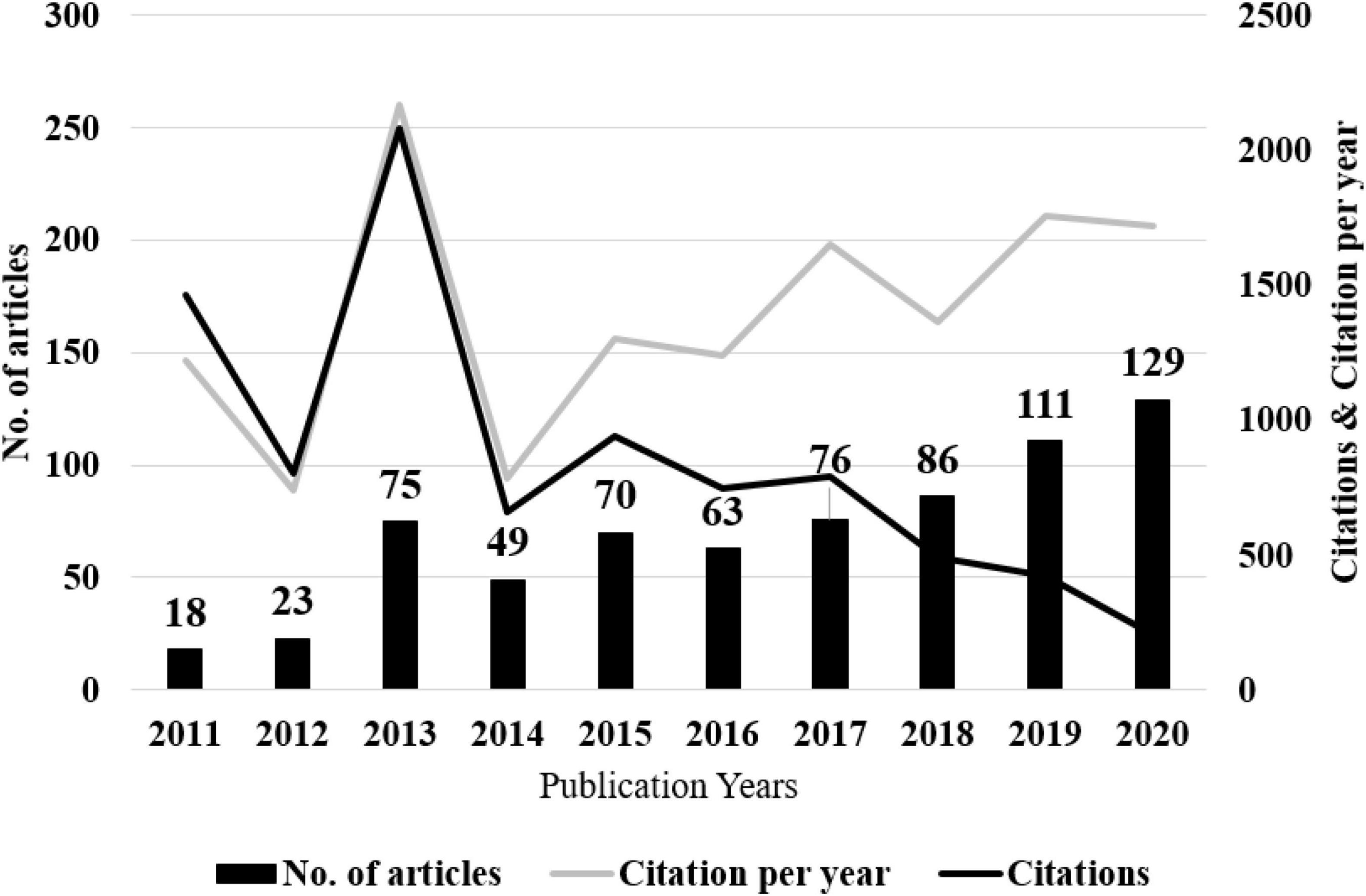
Figure 1. The Distribution of Annual Publications on TPACK.
Publications Countries
A total of 63 countries were counted and only the top 10 countries were listed. The top 10 countries were presented in Figure 2 . The United States had the most publications, the second is Turkey, and the third was in Australia, and these three leading countries constituted 51% of the total 701 articles. In addition, the number of publications in the United States far surpasses other countries, and it is the leading country in the research field of TPACK. However, it is worth noting that among the top 10 countries, there are many Asian countries, which also means that Asian countries have a lot of research on TPACK issues, and even have collaboration in research.
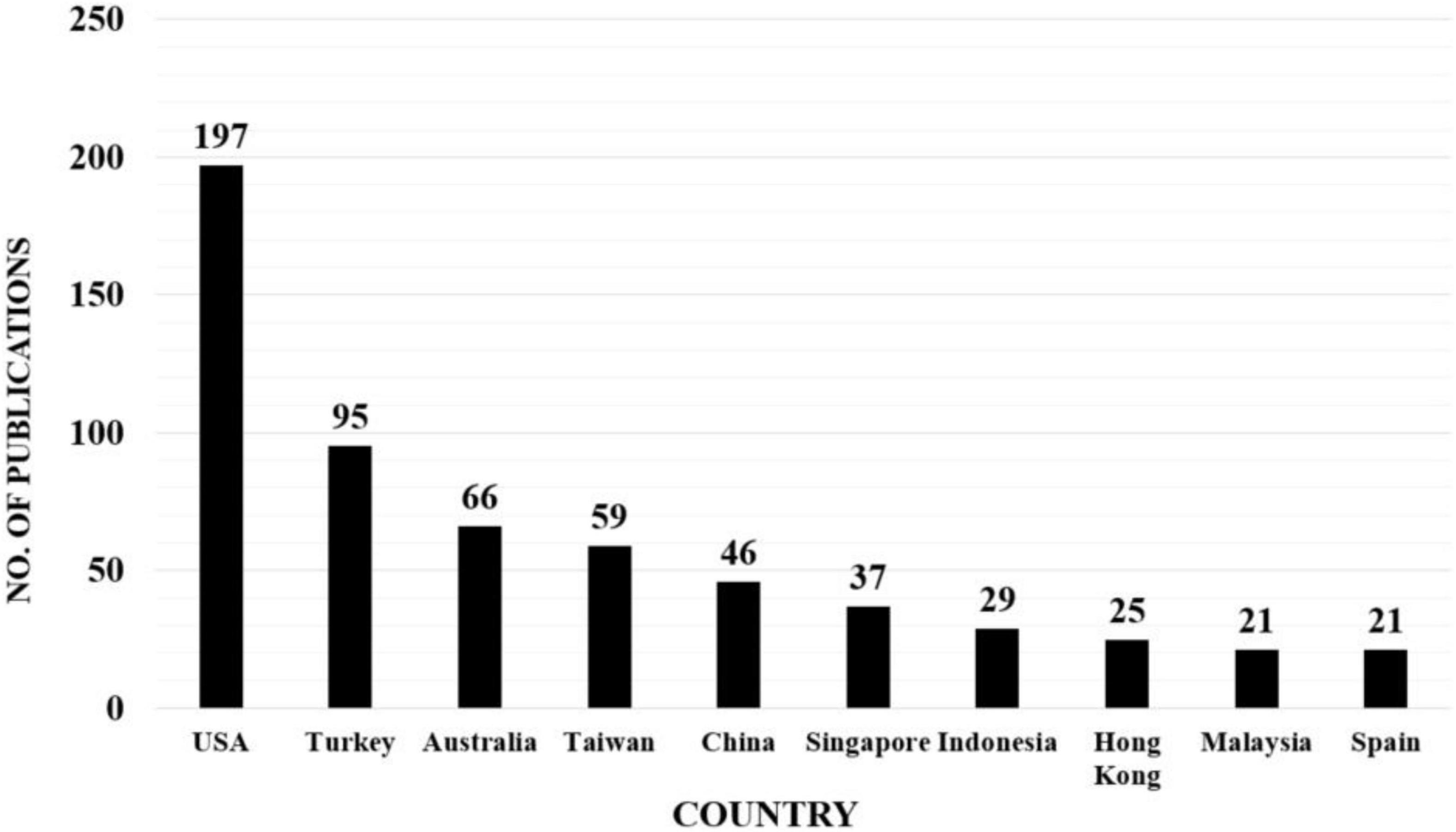
Figure 2. Top 10 countries.
This study also shows the network visualization of various countries through Figure 3 . There are strings of countries in the figure, which indicate that authors maybe collaborate research or cite each other’s articles. The wider the circle, the more publications there are, the thicker the lines connecting them, and the closer the association. The United States is in the middle of the picture that is because the author who proposed the original framework of TPACK is from the United States. As a result, relative follow-up research will cite this paper, which also establishes the United States as a major point, influencing the publication status of multiple countries. The United States interacts more with Asian countries, as can be seen in the image. Furthermore, the four green Asian countries have collaborated and been cited numerous times. There could be two explanations for this. The first is that their points of view and concepts are the same. The second reason could be due to Asia. It is because the cultures are so similar that compared international in-service teachers with pre-service teachers.
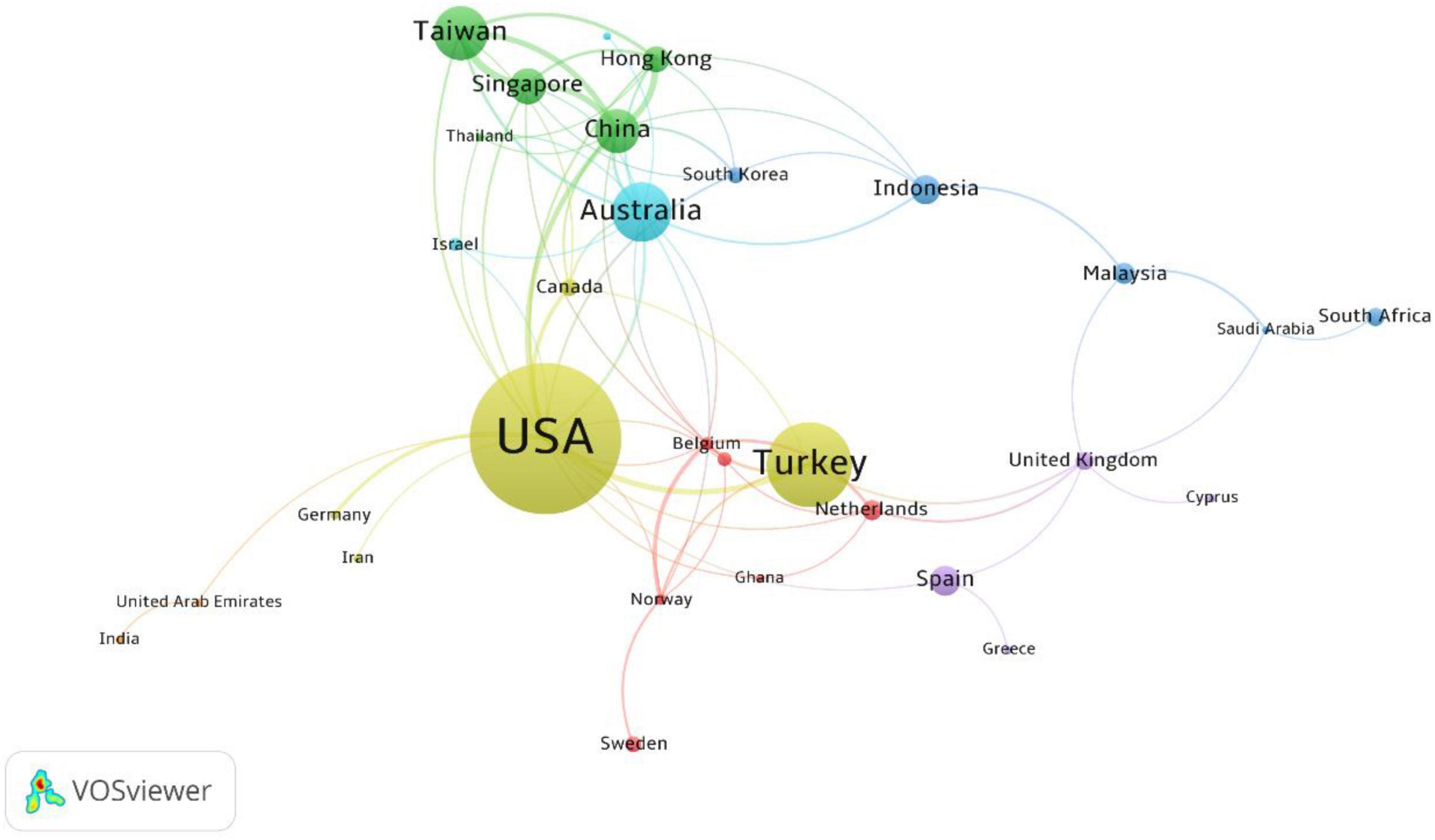
Figure 3. Countries’ network visualization.
Publications Journals
The top 10 most-publication journals are shown in Figure 4 . The top five are Computers and Education (32), Education and Information Technologies (28), Journal of Digital Learning in Teacher Education (28), Journal of Research on Technology in Education (27), and Australasian Journal of Educational Technology (24). Other journals also published at least 13 TPACK related articles, and Educational Technology Research, Development, Education and Information Technologies and Australian Educational Computing are ranking 10ths. As can be seen in Figure 4 , practically every top 10 journal contain the word Technology. Technology has extended throughout education, as evidenced by the journal’s title. It even includes numerous journals in the field of social sciences citation index of education that have a high impact index, such as the number one Computers and Education , which has an impact factor of 5.30 and is a highly influential journal in social science education research.
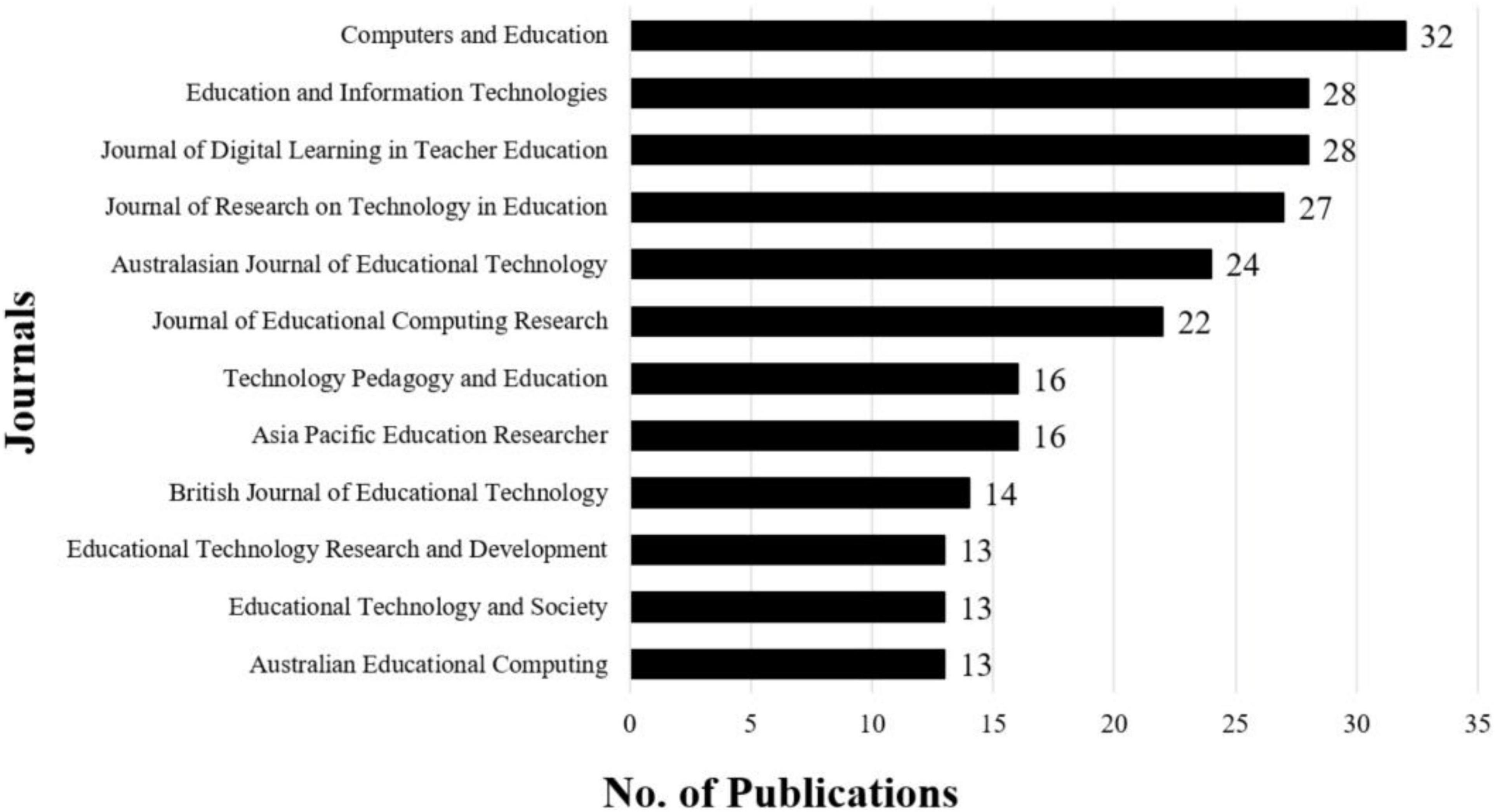
Figure 4. Top 10 leading journals with publications.
Publications Authors
The top 10 most-publication authors in Figure 5 . The top three are Chai, C.S. (35), Koh, J.H.L. (21), and Tsai, C. C. (16). In the density visualization of Figure 6 , keywords densities calculated are translated into colors using a color scheme. By default, VOSviewer uses a red–green–blue color scheme. In this color scheme, red corresponds with the highest item density and blue corresponds with the lowest item density. Figure 6 , shows the authors publishing most articles in TPACK related research. In addition to telling us who the experts and scholars of TPACK are, this result also highlights their importance and influence in this field. The hue is particularly dark on the right side of Figure 6 because scholars from Asian countries have published more than 10 studies on TPACK. What’s more, it’s worth noting, the network visualization of Figure 7 presents the relationship among the authors, including authors’ citation relationship and co-authorships in TPACK research to demonstrate that the authors’ research variables or opinions are similar. Professor Ching Sing Chai of the Chinese University of Hong Kong’s Department of Curriculum and Instruction is the largest and most published member of the circle. For a long time, he has been researching the development of various TPACK models and related scale verification research, as well as giving more new research for follow-up researchers in the field of educational research. Chai, C.S., Koh, J.H.L., Tsai, C. C., and Liang, J. C. have many collaborations and even attempt to break through the new form of the TPACK model. They have also talked about how college students and pre-service teachers in a variety of Asian countries feel about TPACK. It also introduces a slew of new education ideas to the professional topic.
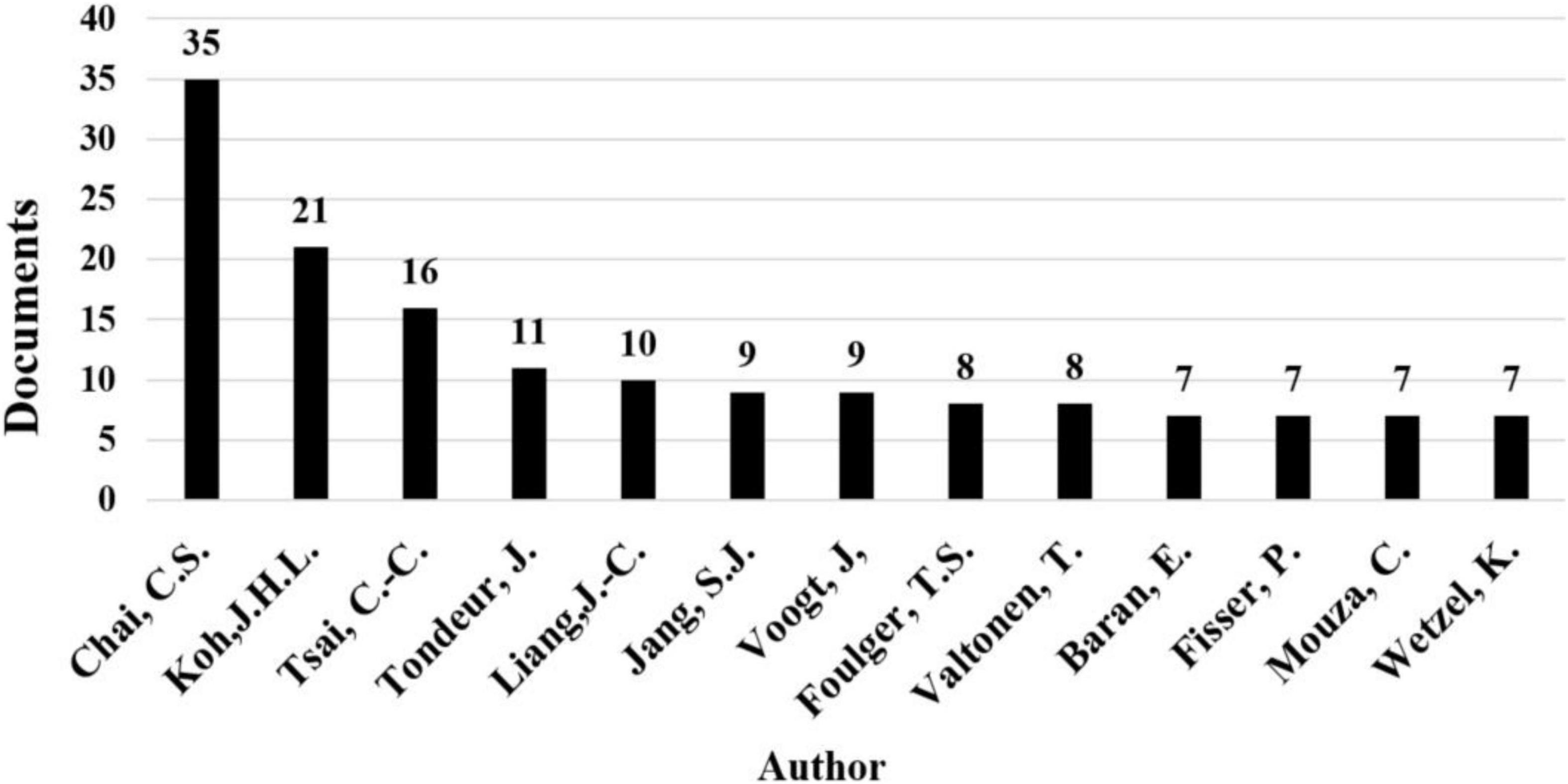
Figure 5. Top 10 authors.
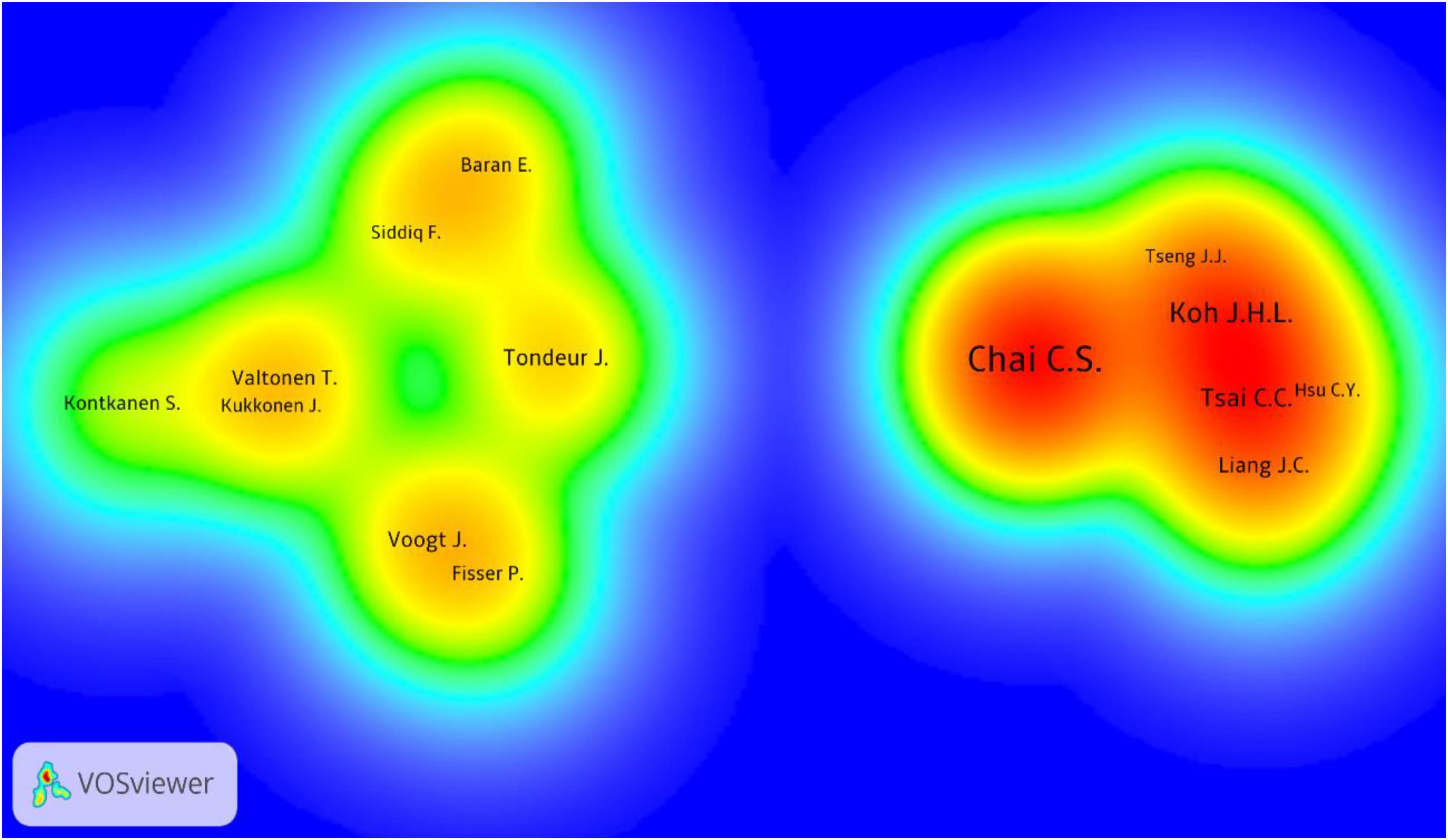
Figure 6. Author’s published density visualization.
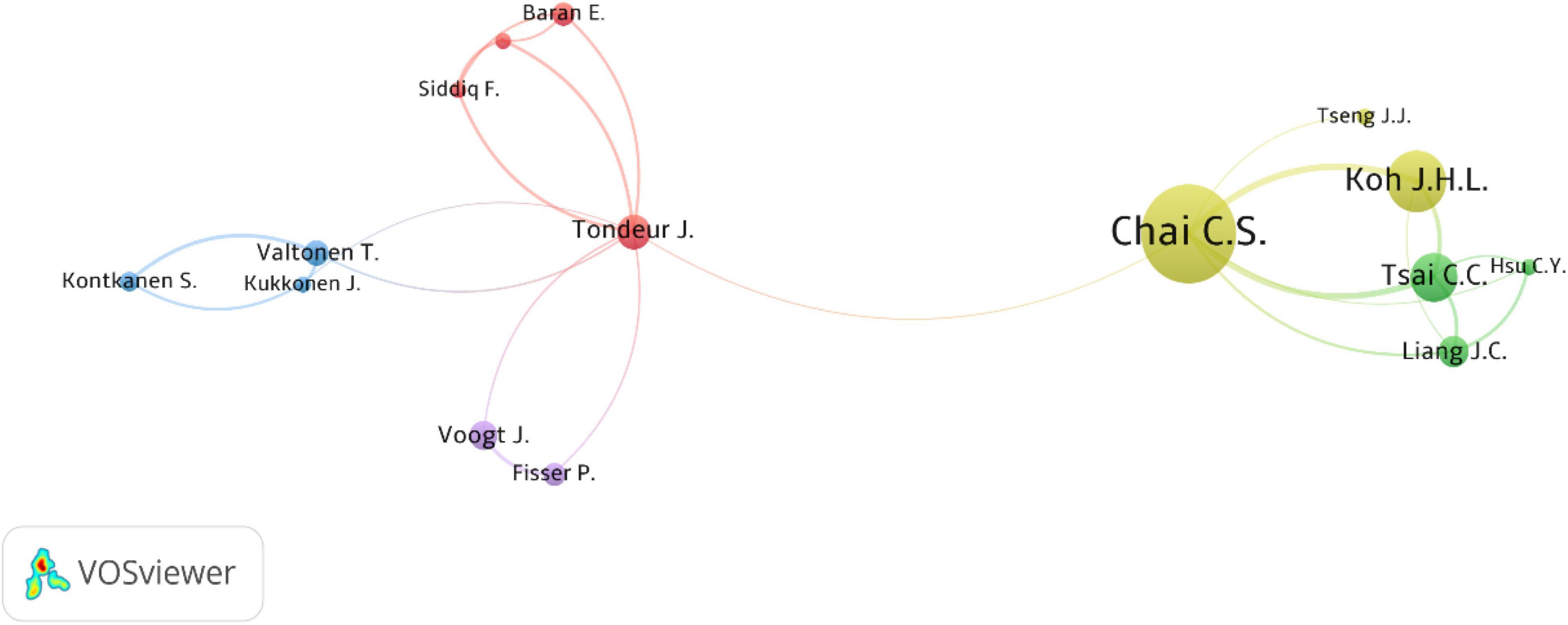
Figure 7. Authors’ network visualization.
Co-occurrence
In Figure 8 , the lines represent the co-occurrence among those keywords and the size of each node indicates the number of documents, the larger the node the more documents co-occur. TPACK is the leading keyword and has stronger links with PCK, teacher education, skill, and pedagogy. As can be seen from the density visualization in Figure 8 , in addition to the detection of relevant hot spots, it can also know which participants were found in these studies, and what research methods and analysis methods were used. It can be seen that most of the TPACK study is carried out through quantitative research. Figure 8 shows that it is mainly separated into two sections. The right-hand green one is mostly about research methodologies. The majority of them use quantitative analytical methods such as correlation, confirmatory factor analysis, and exploratory factor analysis. This is about survey instruments so that you can use them. There are additional terms connected to the questionnaire, such as item, factor, and dimension, as shown in Figure 8 . It even looks into the questionnaire’s reliability and validity after it has been measured.
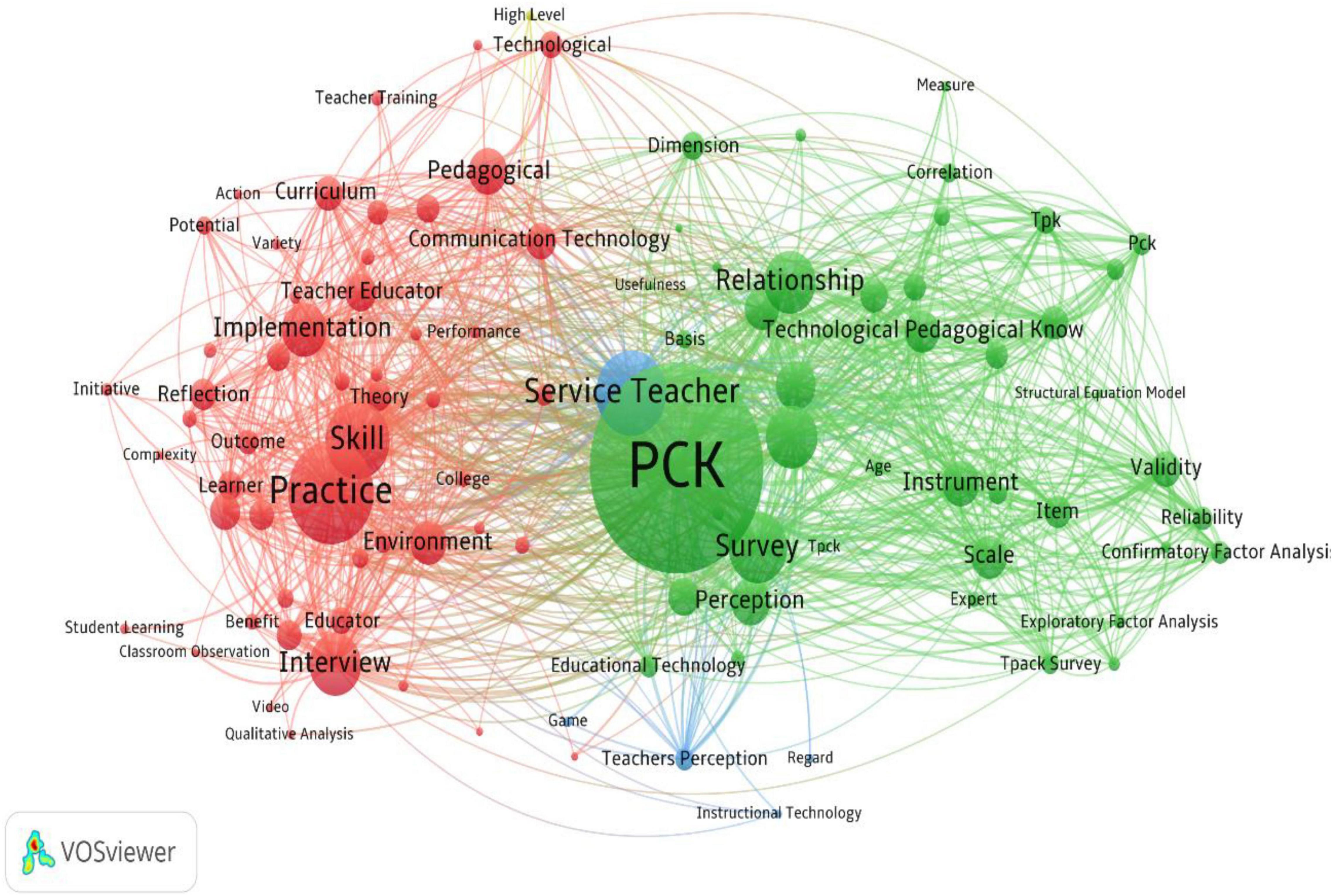
Figure 8. TPACK’s network visualization.
The majority of them are variables related to teaching practice, as shown by the red on the left side of Figure 8 . The design of the curriculum, the application of pedagogy, and the efficacy of students’ learning are all factors to consider. TPACK primarily begins with the teacher’s perspective, it will involve two major groups of educators. The first are in-service teachers who are already on the work and are in the course of their careers. Many research will explore teachers with various teaching experiences and levels to identify which kinds of teachers have TPACK Comparatively decent opinions or abilities. The second step is to examine teacher education programs. Pre-service teachers are still developing their professional knowledge, therefore they will need to prepare relevant knowledge and abilities as they enter the twenty-first century with sophisticated information technology.
Next, we refer to Cobo et al. (2011) identified a bibliometric approach that evaluates a research field and detects and visualizes its conceptual subdomains (specific topics/themes or general thematic areas) and thematic evolution using both performance analysis and science mapping tools. Using the Bibliometrix R package’s functions, a research area can be viewed as a collection of research topics, mapped in a two-dimensional strategic diagram ( Figures 9 , 10 ), and split into four categories: (a) Motor themes: Themes in the upper-right quadrant are well-developed and crucial to the structure of a research field. They are known as the specialty’s motor themes because of their high centrality and density. (b) Niche themes: Themes in the upper-left quadrant have well-developed internal relationships but minimal exterior linkages, making them of just marginal regional significance. These are highly specialized and ancillary topics. (c) Emerging or declining themes: Themes in the lower-left quadrant are both marginal and underdeveloped. The themes in this quadrant have a low density and centrality, and they frequently reflect fresh or vanishing motifs. (d) Basic and transversal themes: Themes in the lower-right quadrant are important for a research topic, although they are still evolving. This quadrant contains both transversal and general themes.
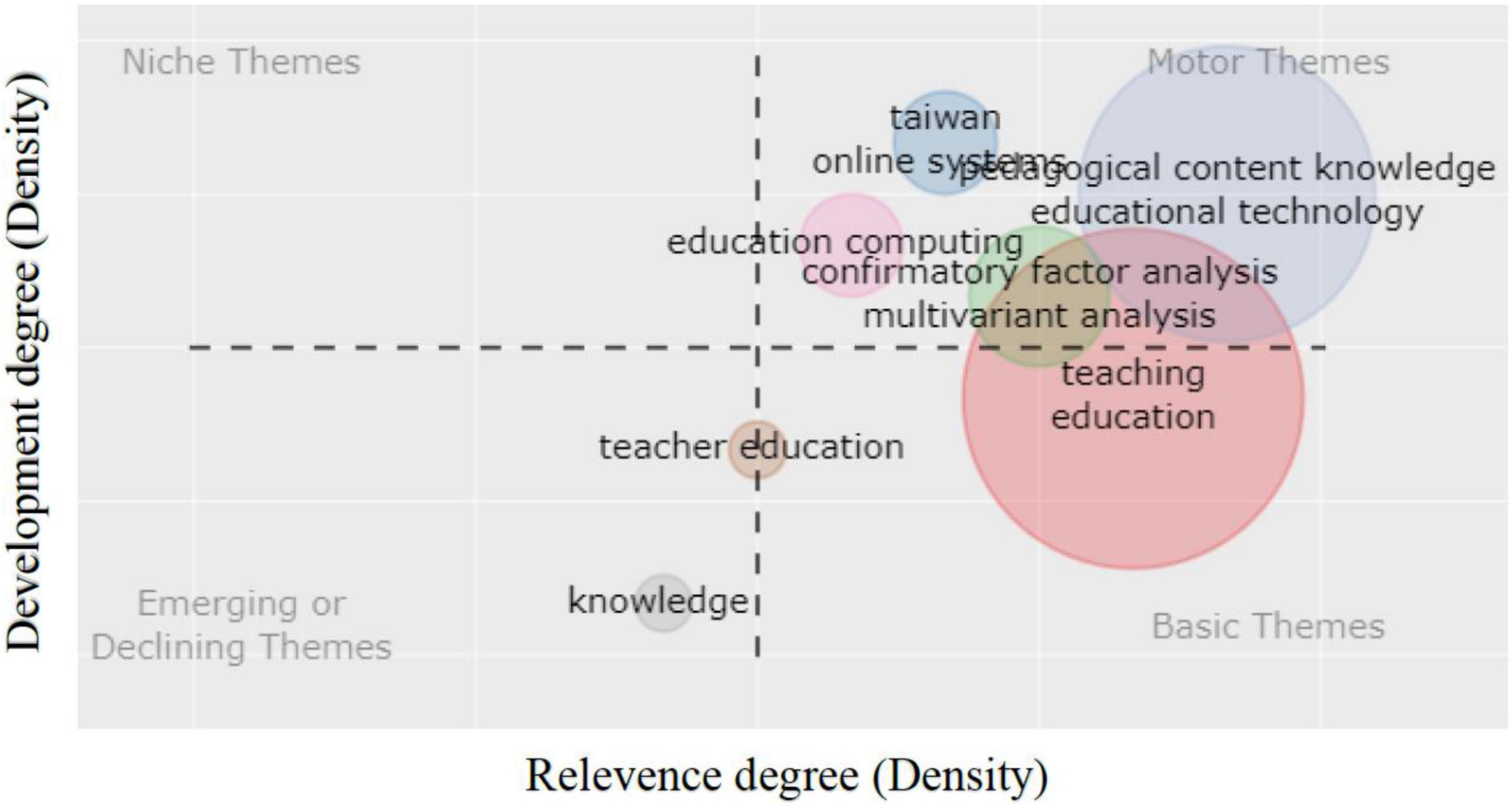
Figure 9. Strategic diagram (2011–2015).
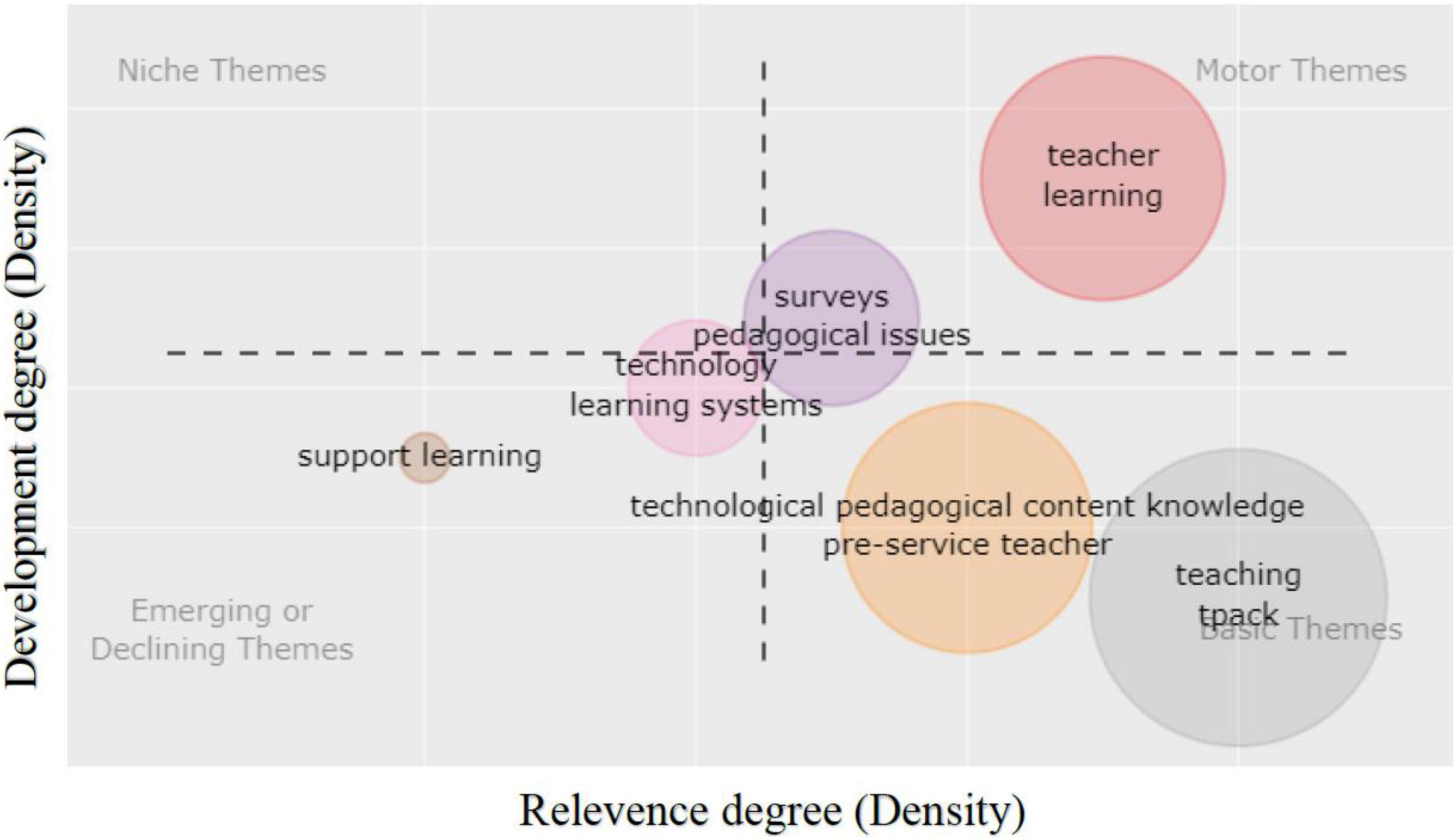
Figure 10. Strategic diagram (2016–2020).
To comprehend the changes and development context of its issues, we divided TPACK into the first 5 years and the next 5 years, as shown in Figures 9 , 10 . Since the previous 5 years were still in development, many issues were concentrated on the fundamental themes, as seen in the Strategic diagram in Figure 9 . The publications discussed from the field of teacher education are also in the early stages of development, and the majority of them employ questionnaires to assess pre-service teachers’ perceptions and have not yet delved into specific training methods and strategies.
However, based on the content of the preceding Figure 1 , it is clear that the number of papers published in the recent 5 years will be significantly more than 2011–2015, and will continue to rise year after year. Therefore, the variety of TPACK in the field of education, you can also see the major differences between Figures 9 , 10 are shown. The transfer of teacher learning from basic to motor themes, for example, demonstrates that numerous articles have been written about the professional development of educators and practitioners that need continuing to improve. Furthermore, there are no niche theme variables between the first 5 years and the next 5 years. It is well recognized that the topics covered by TPACK are more focused than those covered by other educational topics. The research methods, research participants, and research topics have all been narrowed down. It’s worth noting that support learning and teacher learning, which includes pre-service and in-service teachers, is currently the most important topics of TPACK, as shown in Figure 10 . Due to the rapid development of information and technology, many types of research on technology in teaching have clarified its effectiveness. As a result, a growing number of teachers have recognized the necessity for professional training in technological knowledge to understand how to integrate TPACK.
We know that in recent years, more and more articles have examined how to strategically improve teachers’ TPACK, which encompasses both in-service and pre-service instructors, from Emerging or declining themes. This may lead to the next TPACK development. Some publications have even begun to invest in qualitative research observations or interviews to better understand the state of instructors’ learning and usage of technology, to gain a better understanding of the professional knowledge learning process. This is also in line with the state of Figure 11 in terms of Trend themes. From the simple talk of PCK to the changes after TPACK intervention, and then progressively to the specific practice of implementation, that can be seen. Trend topics also show that there has been a gradual issue been discussion increase in the last 2 years, especially courses for training and professional growth. This could also give TPACK a renewed chance at growth, allowing it to progress even further.
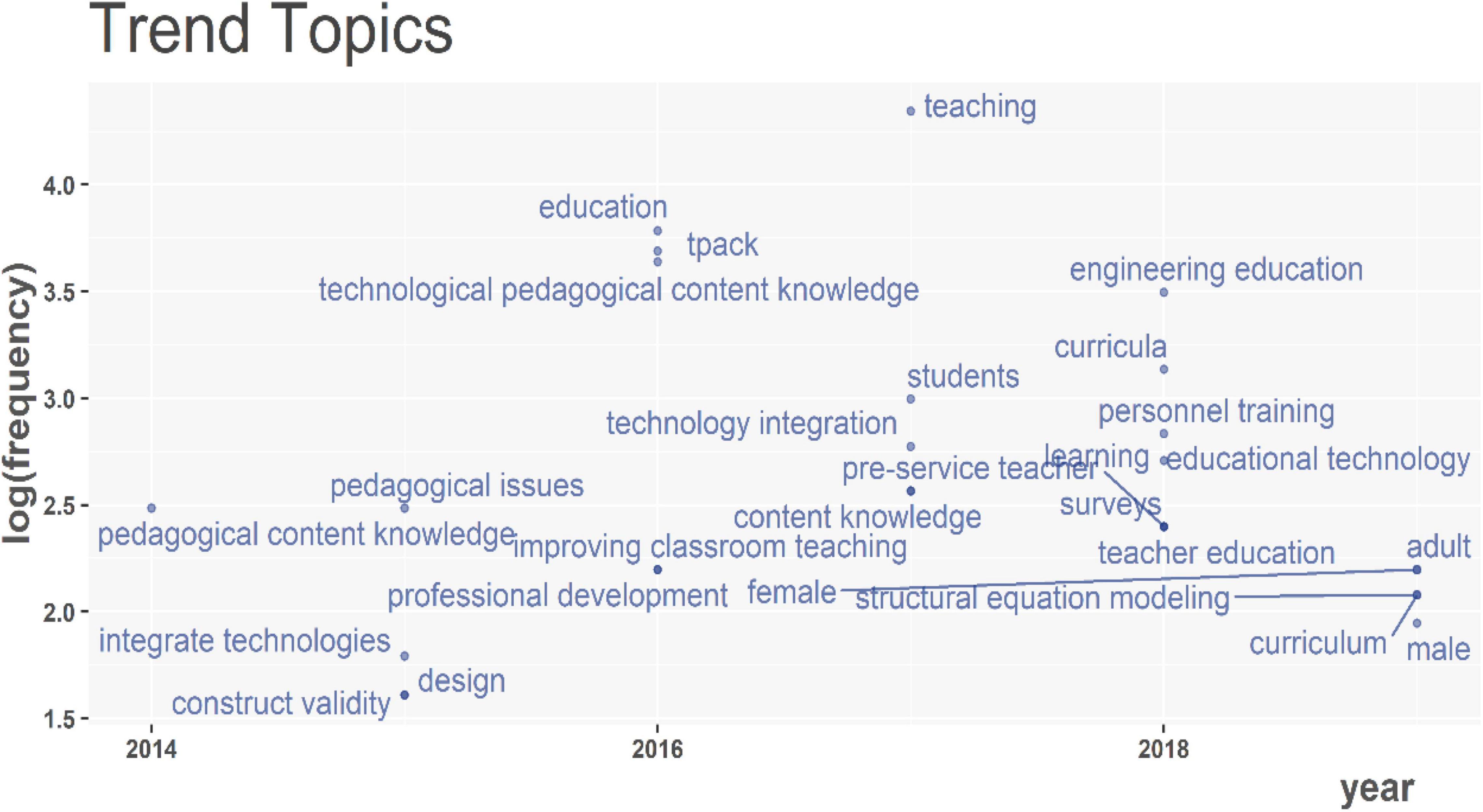
Figure 11. Trend topics.
Discussion and Conclusion
TPACK’s core themes from the highly cited articles have been surrounding PCK, teacher education, skill, and pedagogy. First and foremost, the section regarding PCK in this study contains both TPACK and PCK. The amount of study into TPACK has expanded rapidly in recent decades, resulting in rapid changes in knowledge in this field ( Willermark, 2018 ). Self-assessment through questionnaires was the most commonly utilized method for examining TPACK. Participants were frequently asked to assess items quantitatively on a 5- or 7-point Likert scale, with subscales measuring all seven or a subset of the TPACK knowledge domains ( Schmidt et al., 2009 ; Chai et al., 2013 ). The questions were of a generic type, focusing on what teachers believed they understood, regardless of context. Several instruments have been created that use various methods to operationalize the TPACK construct.
In addition, TPACK includes seven knowledge dimensions that are well known, and the majority of the study focuses on the four high-level knowledge dimensions of PCK, TCK, TPK, and TPCK. Some researchers have viewed TPACK as an extension of PCK ( Niess, 2005 ), while others have viewed it as a distinct category of knowledge ( Angeli and Valanides, 2009 ; Cox and Graham, 2009 ). Therefore, we can deduce that the quick release of TPACK includes discussions of various knowledge concepts. This provides a field with new challenges and stimulation, as well as a degree of uncertainty about the original framework. Even a large number of studies may aid TPACK in obtaining a more diverse perspective. Continuously update the knowledge structure of this field to clarify the knowledge of the next generation of teachers.
The main research participants are educators, including in-service teachers and pre-service teachers. The results of these two main research participants can also be discussed together with the skills shown in Figure 8 of this research. For pre-service teachers, most of the past research has been conducted through self-report measures, interviews, performance assessments, open-ended questionnaires, and observations ( Wang et al., 2018 ). It’s also worth noting that preservice teachers are more likely to repeat the same type of technology integration activity they learned in their previous classrooms ( Jaipal-Jamani and Figg, 2015 ), demonstrating the value of technology modeling and how strategically scaffolding those experiences throughout a preparation program can influence preservice teachers’ development of TPACK. In previous research, the first iteration of studies using questionnaires focused primarily on “general” preservice teachers’ development of TPACK ( Schmidt et al., 2009 ), whereas the second iteration of studies using questionnaires focused more on subject-specific preservice teacher knowledge development related to TPACK ( Özgün-Koca et al., 2010 ; Lin et al., 2013 ). The research trends indicate an increased interest in TPACK research over time ( Wu, 2013 ). The highest number of TPACK articles was found in educational technology journals, which is aligned with the results reported by Chai et al. (2013) .
However, studies still mainly focus on examining teacher TPACK from the perspective of knowledge rather than competence. This can be problematic as gaps have been shown to occur between self-reporting and performance in practice, between displayed knowledge and application of such knowledge, and between performance exercises and typical behavior ( Willermark, 2018 ). This is also supported by the findings of Figures 9 , 10 of this study. Teacher education research began with a study of pre-service teacher knowledge development. It has, however, gradually shifted in recent years to explore more specific subject knowledge. This demonstrates that teacher education is using the TPACK implementation strategy to better identify teachers’ knowledge levels. Identifying teacher TPACK through teaching activities has several advantages. Teachers must use their knowledge in real-world situations when using this approach. Studying planning activity performance is beneficial because it captures teachers’ pedagogical reasoning, intents, and decision-making about how to connect learning goals with pedagogical tactics, as well as their tool selection and use ( Willermark, 2018 ).
For in-service teachers, teachers’ professional knowledge may become the main focus as it has been proved to be a key predictor of instructional quality, teachers’ professional knowledge may become the main focus ( Baumert et al., 2010 ). There are generic frameworks that address necessary knowledge in the context of digital transformation ( Van Laar et al., 2017 ; Oberländer et al., 2020 ). Teachers with different teaching years and experience transfer and implement knowledge in different ways. As a result, various workshops and projects have been conducted to promote the professional development of in-service teachers’ TPACK ( Tseng and Kuo, 2014 ; Yurtseven Avci et al., 2020 ). It even promotes the development of Self-regulated learning for TPACK through a computer-based learning environment ( Huang and Lajoie, 2021 ; Huang et al., 2021 ). At the moment, teacher training looking for a good strategy to help teachers enhance their TPACK, which might involve using teaching consultation or one-to-one faculty support methods to help teachers develop unique professional knowledge ( Koh, 2020 ).
For specific teaching strategies, TPACK-SAMR Models is a new-style way to review and evaluate the application value of technological tools ( Tunjera and Chigona, 2020 ). SAMR Models include the following four main stages, substitution, augmentation, modification, redefinition. SAMR Models assist teachers in effectively using technology and integrating it into classroom teaching and provide a framework to support teachers and course designers to use mobile devices to create the best and most suitable learning experience. This model encourages teachers to integrate low-level technology into teaching, and then gradually use high-level technology to integrate into teaching to promote teaching and learning to a higher level. When used together, the TPACK and SAMR models provide important insight into where obstacles and opportunities arise when selecting technology for student learning ( Drugova et al., 2021 ). TPACK helps teachers contextualize the information they need to integrate technology. SAMR supports the analysis of the precise levels used for enhancement and transformation, as well as the examination of integration from both the teachers’ and students’ perspectives ( Kihoza et al., 2016 ). It can be seen that TPACK training has gradually found more ways to practice. This can also provide teachers with a framework to assist their professional development in the era of rapid technological development.
At the same time as researchers get a better understanding of these circumstances, they may share their knowledge with teachers, parents, administrators, and other stakeholders to help them change their practices. The findings of this study do not have a direct impact on implications; however, paying closer attention to the context will have a major impact on teaching and learning. Attending to context may bring researchers into contact with a wide range of teachers and students in a variety of settings, enhancing our understanding of teaching with technology across contexts while also providing help and guidance in areas where we are inexperienced ( Rosenberg and Koehler, 2015 ). Finally, our perspective must objectively interpret various bibliographic materials for this research. However, during the last decade, we can see that TPACK has increasingly shifted to more diversified subjects and is even searching for good promotion strategies. We also expect TPACK to be fully exploited in other areas in the future, based on the COVID-19 epidemic.
Finally, as academics who have published scientific studies based on bibliometric analysis, we would want to emphasize the importance of science mapping. This strategy takes advantage of quantitative approaches’ accuracy, and it’s often surprising how much “numbers explain a rich story.” This is due, at least in part, to the approach’s concentration on “visualizing relations” between different aspects of the literature. Therefore, after the end of the study, we hope that other academics or databases, such as WOS, will continue with this review study, which could be an alternative for future research. The findings of this fast scoping analysis provided valuable insight into the wide range of publications in the TPACK field that grasp the past and predict the future.
Data Availability Statement
The raw data supporting the conclusions of this article will be made available by the authors, without undue reservation.
Author Contributions
H-YL and C-YC: conceptualization. C-YC and GW: methodology. H-YL: writing-original draft preparation. H-YL and GW: writing—review and editing. All authors have read and approved the final version of the manuscript, and agree with the order of presentation of the authors.
Conflict of Interest
The authors declare that the research was conducted in the absence of any commercial or financial relationships that could be construed as a potential conflict of interest.
Publisher’s Note
All claims expressed in this article are solely those of the authors and do not necessarily represent those of their affiliated organizations, or those of the publisher, the editors and the reviewers. Any product that may be evaluated in this article, or claim that may be made by its manufacturer, is not guaranteed or endorsed by the publisher.
Abramo, G., and D’Angelo, C. A. (2011). Evaluating research: from informed peer review to bibliometrics. Scientometrics 87, 499–514. doi: 10.1007/s11192-011-0352-7
CrossRef Full Text | Google Scholar
Angeli, C., and Valanides, N. (2005). Preservice elementary teachers as information and communication technology designers: an instructional systems design model based on an expanded view of pedagogical content knowledge. J. Comput. Assist. Learn. 21, 292–302. doi: 10.1111/j.1365-2729.2005.00135.x
Angeli, C., and Valanides, N. (2009). Epistemological and methodological issues for the conceptualization, development, and assessment of ICT–TPCK: advances in technological pedagogical content knowledge (TPCK). Comput. Educ. 52, 154–168. doi: 10.1016/j.compedu.2008.07.006
Aria, M., and Cuccurullo, C. (2017). bibliometrix: an R-tool for comprehensive science mapping analysis. J. Inform. 11, 959–975. doi: 10.1016/j.joi.2017.08.007
Baumert, J., Kunter, M., Blum, W., Brunner, M., Voss, T., Jordan, A., et al. (2010). Teachers’ mathematical knowledge, cognitive activation in the classroom, and student progress. Am. Educ. Res. J. 47, 133–180. doi: 10.3102/0002831209345157
Briner, R. B., and Denyer, D. (2012). “Systematic review and evidence synthesis as a practice and scholarship tool,” in Handbook of evidence-based management: companies, classrooms and research , ed. D. M. Rousseau (Oxford: Oxford University Press), 112–129. doi: 10.1093/oxfordhb/9780199763986.013.0007
Carpenter, J. P., Rosenberg, J. M., Dousay, T. A., Romero-Hall, E., Trust, T., Kessler, A., et al. (2020). What should teacher educators know about technology? Perspectives and self-assessments. Teach. Teach. Educ. 95:103124. doi: 10.1016/j.tate.2020.103124
Chai, C. S., Koh, J. H. L., and Tsai, C.-C. (2013). A review of technological pedagogical content knowledge. J. Educ. Technol. Soc. 16, 31–51.
Google Scholar
Chen, C. (2006). CiteSpace II: detecting and visualizing emerging trends and transient patterns in scientific literature. J. Am. Soc. Inf. Sci. Technol. 57, 359–377. doi: 10.1002/asi.20317
Cobo, M. J., López-Herrera, A. G., Herrera-Viedma, E., and Herrera, F. (2011). An approach for detecting, quantifying, and visualizing the evolution of a research field: a practical application to the fuzzy sets theory field. J. Inform. 5, 146–166. doi: 10.1016/j.joi.2010.10.002
Cox, S., and Graham, C. R. (2009). Using an elaborated model of the TPACK framework to analyze and depict teacher knowledge. TechTrends 53, 60–69. doi: 10.1007/s11528-009-0327-1
De Battisti, F., Ferrara, A., and Salini, S. (2015). A decade of research in statistics: a topic model approach. Scientometrics 103, 413–433. doi: 10.1007/s11192-015-1554-1
Di Blas, N., and Paolini, P. (2016). “Distributed and dynamic TPACK: evidences from a (large) case study,” in Paper presented at the Society for Information Technology & Teacher Education International Conference , eds G. Chamblee and L. Langub (Waynesville, NC USA: Association for the Advancement of Computing in Education (AACE))
Di Blas, N., Paolini, P., Sawaya, S., and Mishra, P. (2014). “Distributed TPACK: going beyond knowledge in the head,” in Paper presented at the Society for Information Technology & Teacher Education International Conference , eds M. Searson and M. N. Ochoa (Jacksonville, Florida, United States: AACE)
Doering, A., Koseoglu, S., Scharber, C., Henrickson, J., and Lanegran, D. (2014). Technology integration in K-12 geography education using TPACK as a conceptual model. J. Geogr . 113, 223–237.
Drugova, E., Zhuravleva, I., Aiusheeva, M., and Grits, D. (2021). Toward a model of learning innovation integration: TPACK-SAMR based analysis of the introduction of a digital learning environment in three Russian universities. Educ. Inf. Technol. 26, 4925–4942. doi: 10.1007/s10639-021-10514-2
PubMed Abstract | CrossRef Full Text | Google Scholar
Foulger, T. S., Jin, Y., Mourlam, D. J., and Ebersole, L. (2021). Equitable access to TPACK research: tensions about using social media to disseminate scholarship. Comput. Educ. Open doi: 10.1016/j.caeo.2021.100067
Graham, C. R. (2011). Theoretical considerations for understanding technological pedagogical content knowledge (TPACK). Comput. Educ. 57, 1953–1960. doi: 10.1016/j.compedu.2011.04.010
Harris, J. B., and Hofer, M. J. (2011). Technological pedagogical content knowledge (TPACK) in action: a descriptive study of secondary teachers’ curriculum-based, technology-related instructional planning. J. Res. Technol. Educ. 43, 211–229. doi: 10.1080/15391523.2011.10782570
Herold, B. (2016). Technology in education: an overview. Educ. Week 20, 129–141.
Herring, M. C., Koehler, M. J., and Mishra, P. (2016). “1Introduction to the Second Edition of the TPACK Handbook,” in Handbook of technological pedagogical content knowledge (TPACK) for educators , eds M. C. Herring, P. Mishra, and M. J. Koehler (Milton Park: Routledge), 11–18.
Hilton, J. T. (2016). A case study of the application of SAMR and TPACK for reflection on technology integration into two social studies classrooms. Soc. Stud. 107, 68–73. doi: 10.4324/9781315771328
Huang, L., and Lajoie, S. P. (2021). Process analysis of teachers’ self-regulated learning patterns in technological pedagogical content knowledge development. Comput. Educ. 166:104169. doi: 10.1016/j.compedu.2021.104169
Huang, L., Li, S., Poitras, E. G., and Lajoie, S. P. (2021). Latent profiles of self-regulated learning and their impacts on teachers’ technology integration. Br. J. Educ. Technol. 52, 695–713. doi: 10.1016/j.compedu.2021.104169
Hughes, J. (2005). The role of teacher knowledge and learning experiences in forming technology-integrated pedagogy. J. Technol. Teach. Educ. 13, 277–302.
Hung, J. L. (2012). Trends of e-learning research from 2000 to 2008: use of text mining and bibliometrics. Br. J. Educ. Technol. 43, 5–16. doi: 10.1111/j.1467-8535.2010.01144.x
Hussain, A., Fatima, N., and Kumar, D. (2011). Bibliometric analysis of the’Electronic Library’journal (2000-2010). Webology 8:87.
Jaipal-Jamani, K., and Figg, C. (2015). A case study of a TPACK-based approach to teacher professional development: teaching science with blogs. Contemp. Issues Technol. Teach. Educ. 15, 161–200.
Jang, S. J., and Tsai, M. F. (2012). Exploring the TPACK of Taiwanese elementary mathematics and science teachers with respect to use of interactive whiteboards. Comput. Educ. 59, 327–338. doi: 10.1016/j.compedu.2012.02.003
Kevin, W. U. A., Zainab, A. N., and Anuar, N. B. (2017). Bibliometric studies on single journals: a review. Malays. J. Libr. Inf. Sci. 14, 17–55.
Kihoza, P., Zlotnikova, I., Bada, J., and Kalegele, K. (2016). Classroom ICT integration in Tanzania: Opportunities and challenges from the perspectives of TPACK and SAMR models. Int. J. Educ. Dev. ICT 12, 107–128.
Koehler, M. J., Mishra, P., Kereluik, K., Shin, T. S., and Graham, C. R. (2014). “The technological pedagogical content knowledge framework,” in Handbook of research on educational communications and technology , eds J. Spector, M. Merrill, J. Elen, and M. Bishop (New York, NY: Springer), 101–111. doi: 10.1007/978-1-4614-3185-5_9
Koh, J. H. L. (2020). Three approaches for supporting faculty technological pedagogical content knowledge (TPACK) creation through instructional consultation. Br. J. Educ. Technol. 51, 2529–2543. doi: 10.1111/bjet.12930
Lee, M. H., and Tsai, C. C. (2010). Exploring teachers’ perceived self efficacy and technological pedagogical content knowledge with respect to educational use of the World Wide Web. Instr. Sci. 38, 1–21. doi: 10.1007/s11251-008-9075-4
Lin, T.-C., Tsai, C.-C., Chai, C. S., and Lee, M.-H. (2013). Identifying science teachers’ perceptions of technological pedagogical and content knowledge (TPACK). J. Sci. Educ. Technol. 22, 325–336. doi: 10.1007/s10956-012-9396-6
Lux, N. J., Bangert, A. W., and Whittier, D. B. (2011). The development of an instrument to assess preservice teacher’s technological pedagogical content knowledge. J. Educ. Comput. Res. 45, 415–431. doi: 10.2190/ec.45.4.c
Mishra, P. (2019). Considering Contextual Knowledge: the TPACK Diagram Gets an Upgrade. J. Digit. Learn. Teach. Educ. 35, 76–78. doi: 10.1080/21532974.2019.1588611
Mishra, P., and Koehler, M. J. (2006). Technological pedagogical content knowledge: a framework for teacher knowledge. Teach. Coll. Rec. 108, 1017–1054. doi: 10.1177/016146810610800610
Niess, M. L. (2005). Preparing teachers to teach science and mathematics with technology: developing a technology pedagogical content knowledge. Teach. Teach. Educ. 21, 509–523. doi: 10.1016/j.tate.2005.03.006
Oberländer, M., Beinicke, A., and Bipp, T. (2020). Digital competencies: a review of the literature and applications in the workplace. Comput. Educ. 146:103752. doi: 10.1016/j.compedu.2019.103752
Owen, K. B., Smith, J., Lubans, D. R., Ng, J. Y., and Lonsdale, C. (2014). Self-determined motivation and physical activity in children and adolescents: a systematic review and meta-analysis. Prev. Med . 67, 270–279. doi: 10.1016/j.ypmed.2014.07.033
Özgün-Koca, S. A., Meagher, M., and Edwards, M. T. (2010). Preservice teachers’ emerging TPACK in a technology-rich methods class. Math. Educ. 19, 10–20.
Porras-Hernández, L. H., and Salinas-Amescua, B. (2013). Strengthening TPACK: a broader notion of context and the use of teacher’s narratives to reveal knowledge construction. J. Educ. Comput. Res. 48, 223–244. doi: 10.2190/ec.48.2.f
Pritchard, A. (1969). Statistical bibliography or bibliometrics. J. Doc. 25, 348–349.
Rosenberg, J. M., and Koehler, M. J. (2015). Context and technological pedagogical content knowledge (TPACK): a systematic review. J. Res. Technol. Educ. 47, 186–210. doi: 10.1080/15391523.2015.1052663
Ryan, T. P., and Woodall, W. H. (2005). The most-cited statistical papers. J. Appl. Stat. 32, 461–474. doi: 10.1080/02664760500079373
Schmid, M., Brianza, E., and Petko, D. (2020). Developing a short assessment instrument for Technological Pedagogical Content Knowledge (TPACK. xs) and comparing the factor structure of an integrative and a transformative model. Comput. Educ. 157:103967. doi: 10.1016/j.compedu.2020.103967
Schmidt, D. A., Baran, E., Thompson, A. D., Mishra, P., Koehler, M. J., and Shin, T. S. (2009). Technological pedagogical content knowledge (TPACK) the development and validation of an assessment instrument for preservice teachers. J. Res. Technol. Educ. 42, 123–149. doi: 10.1080/15391523.2009.10782544
Shulman, L. (1987). Knowledge and teaching: foundations of the new reform. Harv. Educ. Rev. 57, 1–23. doi: 10.17763/haer.57.1.j463w79r56455411
Shulman, L. S. (1986). Those who understand: knowledge growth in teaching. Educ. Res. 15, 4–14. doi: 10.3102/0013189x015002004
Small, H. (1973). Co-citation in the scientific literature: a new measure of the relationship between two documents. J. Am. Soc. Inf. Sci. 24, 265–269. doi: 10.1002/asi.4630240406
Soler-Costa, R., Moreno-Guerrero, A.-J., López-Belmonte, J., and Marín-Marín, J.-A. (2021). Co-Word Analysis and Academic Performance of the Term TPACK in Web of Science. Sustainability 13:1481. doi: 10.3390/su13031481
Tsay, M.-Y. (2011). A bibliometric analysis and comparison on three information science journals: JASIST, IPM, JOD, 1998–2008. Scientometrics 89, 591–606. doi: 10.1007/s11192-011-0460-4
Tseng, F.-C., and Kuo, F.-Y. (2014). A study of social participation and knowledge sharing in the teachers’ online professional community of practice. Comput. Educ. 72, 37–47. doi: 10.1016/j.compedu.2013.10.005
Tunjera, N., and Chigona, A. (2020). Teacher Educators’ appropriation of TPACK-SAMR models for 21st century pre-service teacher preparation. Int. J. Inf. Commun. Technol. Educ. 16, 126–140. doi: 10.4018/IJICTE.2020070110
Van Eck, N. J., and Waltman, L. (2010). Software survey: VOSviewer, a computer program for bibliometric mapping. Scientometrics 84, 523–538. doi: 10.1007/s11192-009-0146-3
Van Eck, N. J., and Waltman, L. (2017). Citation-based clustering of publications using CitNetExplorer and VOSviewer. Scientometrics 111, 1053–1070. doi: 10.1007/s11192-017-2300-7
Van Laar, E., Van Deursen, A. J., Van Dijk, J. A., and De Haan, J. (2017). The relation between 21st-century skills and digital skills: a systematic literature review. Comput. Hum. Behav. 72, 577–588. doi: 10.1016/j.chb.2017.03.010
Voogt, J., Fisser, P., Pareja Roblin, N., Tondeur, J., and van Braak, J. (2013). Technological pedagogical content knowledge–a review of the literature. J. Comput. Assist. Learn. 29, 109–121. doi: 10.1111/j.1365-2729.2012.00487.x
Wang, W., Schmidt-Crawford, D., and Jin, Y. (2018). Preservice teachers’ TPACK development: a review of literature. J. Digit. Learn. Teach. Educ. 34, 234–258. doi: 10.1080/21532974.2018.1498039
Willermark, S. (2018). Technological pedagogical and content knowledge: a review of empirical studies published from 2011 to 2016. J. Educ. Comput. Res. 56, 315–343. doi: 10.1177/0735633117713114
Wu, Y.-T. (2013). Research trends in technological pedagogical content knowledge (TPACK) research: a review of empirical studies published in selected journals from 2002 to 2011. Br. J. Educ. Technol. 44, E73–E76.
Yeh, Y.-F., Chan, K. K. H., and Hsu, Y.-S. (2021). Toward a framework that connects individual TPACK and collective TPACK: a systematic review of TPACK studies investigating teacher collaborative discourse in the learning by design process. Comput. Educ. 171:104238. doi: 10.1016/j.compedu.2021.104238
Yeh, Y. F., Hsu, Y. S., Wu, H. K., Hwang, F. K., and Lin, T. C. (2014). Developing and validating technological pedagogical content knowledge-practical (TPACK-practical) through the D elphi survey technique. Br. J. Educ. Technol. 45, 707–722. doi: 10.1111/bjet.12078
Yurtseven Avci, Z., O’Dwyer, L. M., and Lawson, J. (2020). Designing effective professional development for technology integration in schools. J. Comput. Assist. Learn. 36, 160–177. doi: 10.1111/jcal.12394
Zupic, I., and Čater, T. (2015). Bibliometric methods in management and organization. Organ. Res. Methods 18, 429–472. doi: 10.1177/1094428114562629
Keywords : bibliometric analysis, TPACK, technology, teacher education, in-service teacher, pre-service teacher, quantitative
Citation: Lee H-Y, Chung C-Y and Wei G (2022) Research on Technological Pedagogical and Content Knowledge: A Bibliometric Analysis From 2011 to 2020. Front. Educ. 7:765233. doi: 10.3389/feduc.2022.765233
Received: 26 August 2021; Accepted: 03 February 2022; Published: 24 February 2022.
Reviewed by:
Copyright © 2022 Lee, Chung and Wei. This is an open-access article distributed under the terms of the Creative Commons Attribution License (CC BY) . The use, distribution or reproduction in other forums is permitted, provided the original author(s) and the copyright owner(s) are credited and that the original publication in this journal is cited, in accordance with accepted academic practice. No use, distribution or reproduction is permitted which does not comply with these terms.
*Correspondence: Chi-Yang Chung, [email protected]
Disclaimer: All claims expressed in this article are solely those of the authors and do not necessarily represent those of their affiliated organizations, or those of the publisher, the editors and the reviewers. Any product that may be evaluated in this article or claim that may be made by its manufacturer is not guaranteed or endorsed by the publisher.

Suggested Searches
- Climate Change
- Expedition 64
- Mars perseverance
- SpaceX Crew-2
- International Space Station
- View All Topics A-Z
Humans in Space
Earth & climate, the solar system, the universe, aeronautics, learning resources, news & events.

NASA’s Hubble, Webb Probe Surprisingly Smooth Disk Around Vega

NASA, Bhutan Conclude Five Years of Teamwork on STEM, Sustainability

What’s Up: November 2024 Skywatching Tips from NASA
- Search All NASA Missions
- A to Z List of Missions
- Upcoming Launches and Landings
- Spaceships and Rockets
- Communicating with Missions
- James Webb Space Telescope
- Hubble Space Telescope
- Why Go to Space
- Commercial Space
- Destinations
- Living in Space
- Explore Earth Science
- Earth, Our Planet
- Earth Science in Action
- Earth Multimedia
- Earth Science Researchers
- Pluto & Dwarf Planets
- Asteroids, Comets & Meteors
- The Kuiper Belt
- The Oort Cloud
- Skywatching
- The Search for Life in the Universe
- Black Holes
- The Big Bang
- Dark Energy & Dark Matter
- Earth Science
- Planetary Science
- Astrophysics & Space Science
- The Sun & Heliophysics
- Biological & Physical Sciences
- Lunar Science
- Citizen Science
- Astromaterials
- Aeronautics Research
- Human Space Travel Research
- Science in the Air
- NASA Aircraft
- Flight Innovation
- Supersonic Flight
- Air Traffic Solutions
- Green Aviation Tech
- Drones & You
- Technology Transfer & Spinoffs
- Space Travel Technology
- Technology Living in Space
- Manufacturing and Materials
- Science Instruments
- For Kids and Students
- For Educators
- For Colleges and Universities
- For Professionals
- Science for Everyone
- Requests for Exhibits, Artifacts, or Speakers
- STEM Engagement at NASA
- NASA's Impacts
- Centers and Facilities
- Directorates
- Organizations
- People of NASA
- Internships
- Our History
- Doing Business with NASA
- Get Involved
NASA en Español
- Aeronáutica
- Ciencias Terrestres
- Sistema Solar
- All NASA News
- Video Series on NASA+
- Newsletters
- Social Media
- Media Resources
- Upcoming Launches & Landings
- Virtual Guest Program
- Image of the Day
- Sounds and Ringtones
- Interactives
- STEM Multimedia

Still Kickin’ Since the ’70s: NASA’s Voyager Mission Keeps Exploring
Final venus flyby for nasa’s parker solar probe queues closest sun pass.

Do You Have Proposals for New Human Research Studies Benefiting Spaceflight?

Research Operations and Integration

We Are All Made of Cells: Space and the Immune System

International SWOT Satellite Spots Planet-Rumbling Greenland Tsunami

NASA, NOAA Rank 2024 Ozone Hole as 7th-Smallest Since Recovery Began

NASA’s New Edition of Graphic Novel Features Europa Clipper

30 Years On, NASA’s Wind Is a Windfall for Studying our Neighborhood in Space

Why NASA’s SPHEREx Mission Will Make ‘Most Colorful’ Cosmic Map Ever

‘Blood-Soaked’ Eyes: NASA’s Webb, Hubble Examine Galaxy Pair


Bundling the Best of Heliophysics Education: DigiKits for Physics and Astronomy Teachers

Amendment 63: FINESST: SMD’s Graduate Student Research, Final Text and Due Date Released.
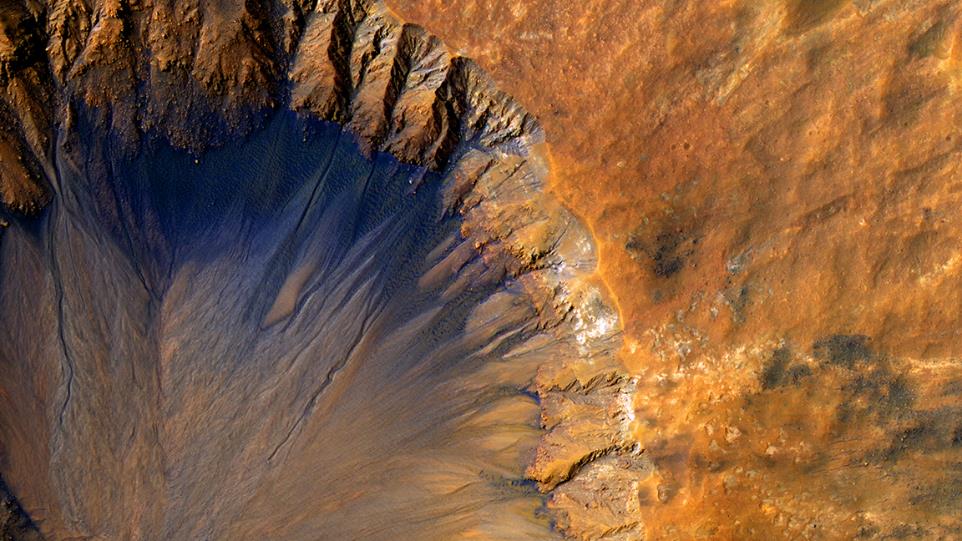
Mars Surface Science Workshops (MSSW)

NASA Brings Drone and Space Rover to Air Show

NASA and Partners Scaling to New Heights in Air Traffic Management

NASA Pilots Add Perspective to Research
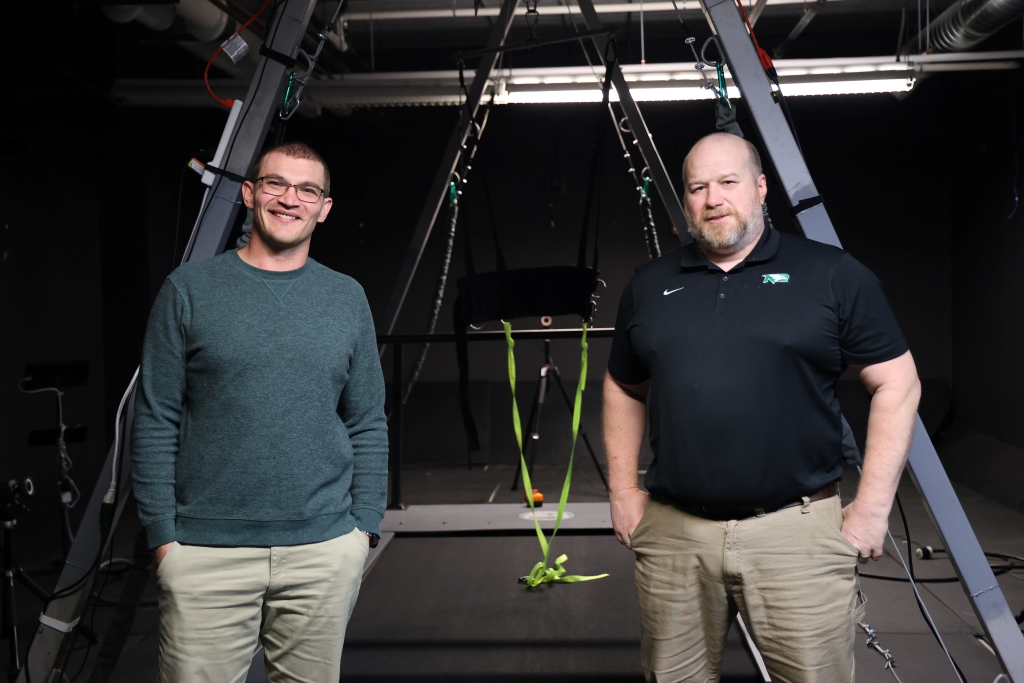
From Campus to Cosmos: NASA Grants Boost Student, University Innovation

From Mars Rovers to Factory Assembly Lines

NASA Technologies Named Among TIME Inventions of 2024
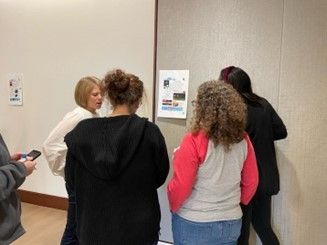
Professional Learning: Using Children’s Books to Build STEM Habits of Mind

How NASA Astronauts Vote from Space Aboard International Space Station
La nasa lleva un dron y un rover espacial a un espectáculo aéreo.

Destacado de la NASA: Felipe Valdez, un ingeniero inspirador

Sacrificio y Éxito: Ingeniero de la NASA honra sus orígenes familiares
Tiernan P. Doyle
As NASA continues to innovate for the benefit of humanity, agency inventions that use new structures to harness sunlight for space travel, enable communications with spacecraft at record-breaking distances, and determine the habitability of a moon of Jupiter, were named Wednesday among TIME’s Inventions of 2024.
“The NASA workforce — wizards, as I call them — have been at the forefront of invention and technology for more than 65 years,” said NASA Administrator Bill Nelson. “From developing Europa Clipper, the largest satellite for a planetary mission that NASA has ever launched, to the Advanced Composite Solar Sail System, and communicating with lasers from deep space, NASA is improving our understanding of life on Earth — and the cosmos — for the benefit of all.”
Solar Sailing with Composite Booms
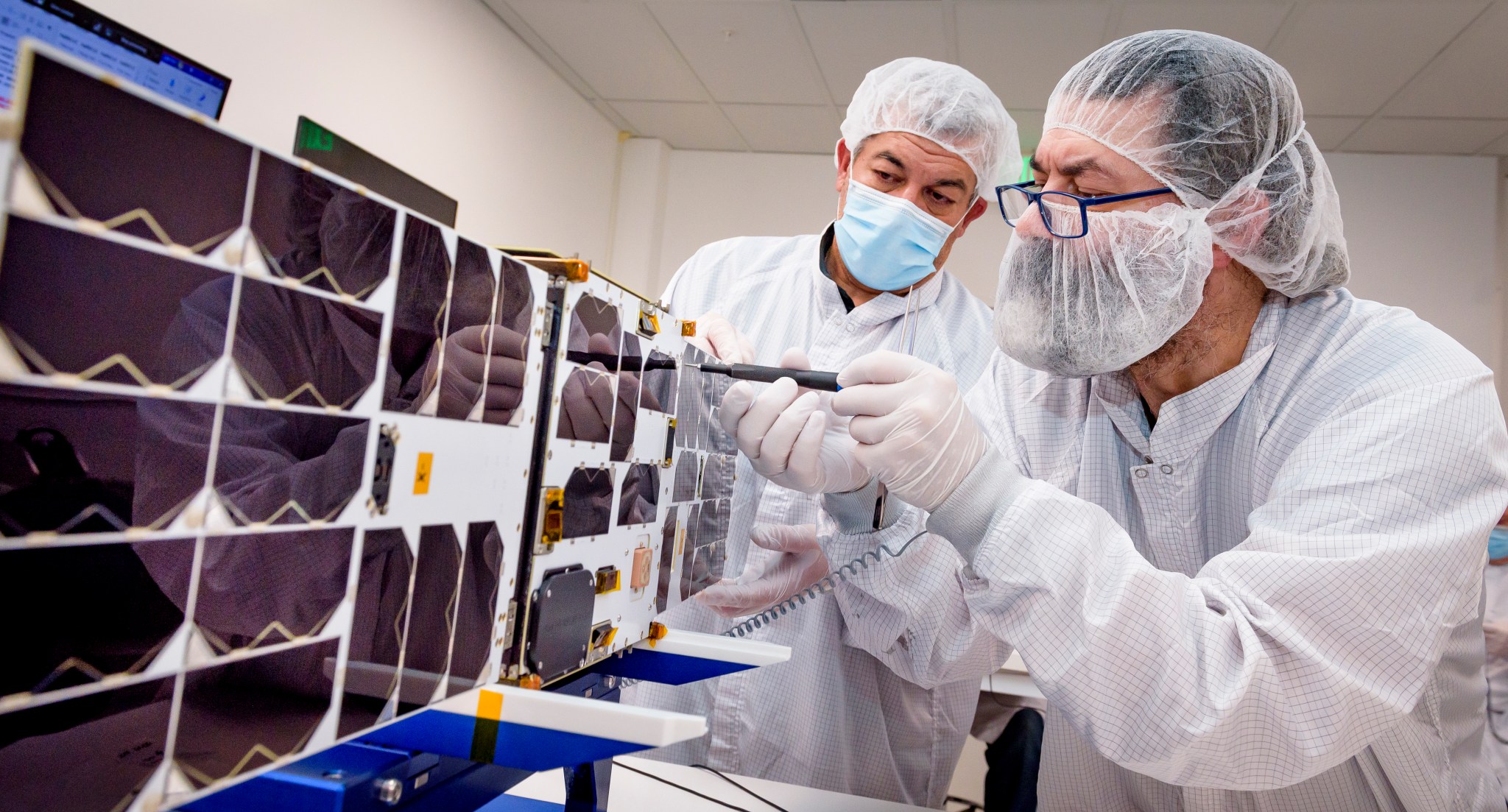
NASA’s Advanced Composite Solar Sail System is testing technologies that could allow spacecraft to “sail on sunlight,” using the Sun’s rays for propulsion. Like a sailboat turning to catch the wind, a solar sail adjusts its trajectory by angling its sail supported by booms deployed from the spacecraft. This demonstration uses a composite boom technology that is stiffer, lighter, and more stable in challenging thermal environments than previous designs. After launching on April 23, aboard Rocket Lab’s Electron rocket, the mission team met its primary objective by deploying the boom and sail system in space in August. Next, they will work to prove performance by using the sail to maneuver in orbit.
Results from this mission could provide an alternative to chemical and electric propulsion systems and inform the design of future larger-scale missions that require unique vantage points, such as space weather early warning satellites.
Communicating with Lasers from Deep Space
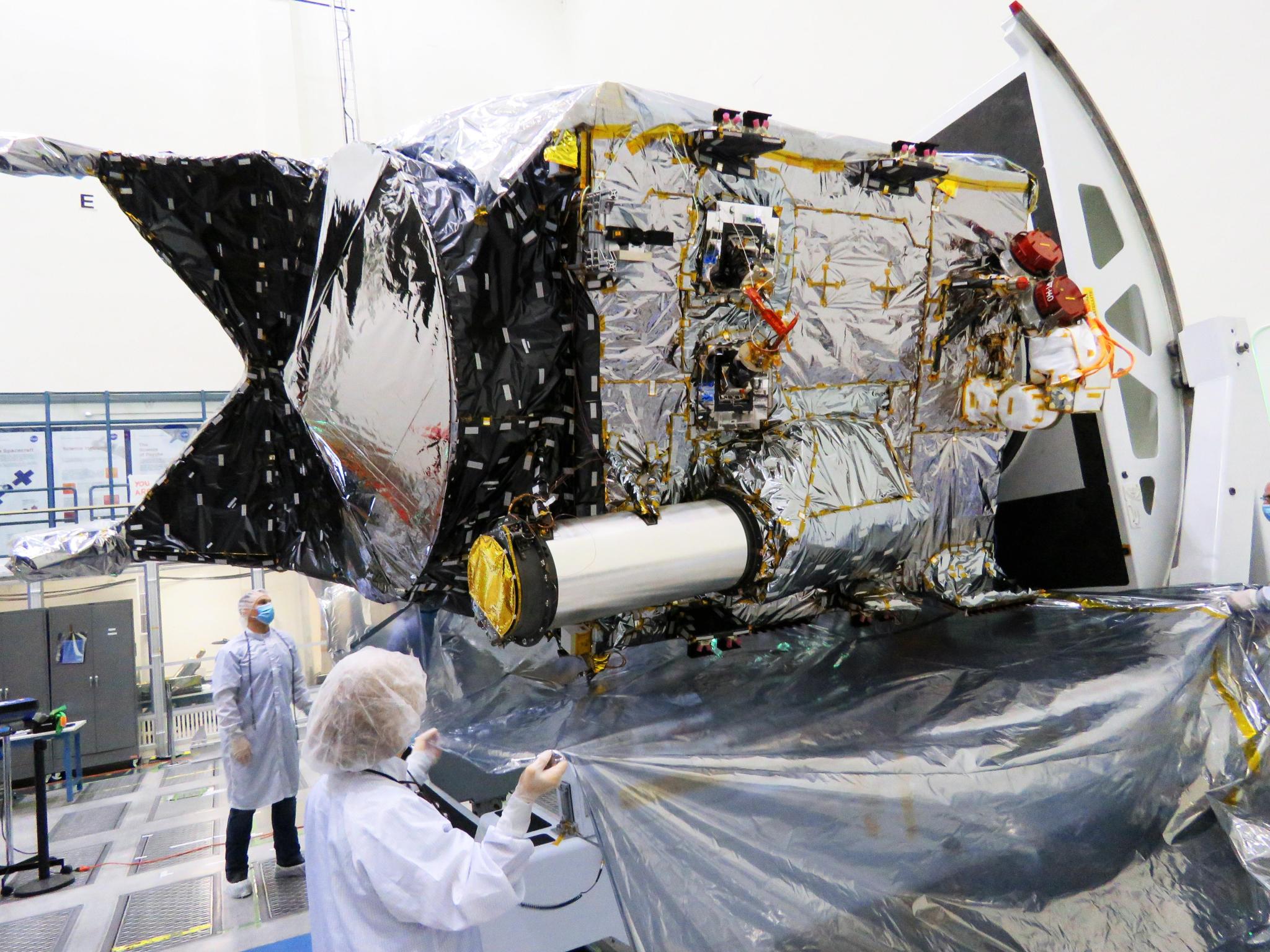
Since launching aboard NASA’s Psyche spacecraft on Oct. 13, 2023, a Deep Space Optical Communications technology demonstration has delivered record-breaking downlink data rates to ground stations as the Psyche spacecraft travels through deep space. To demonstrate the high data rates that are possible with laser communications, photos, telemetry data from the spacecraft, and ultra-high-definition video, including a streamed video of Taters the cat chasing a laser pointer, have been downlinked over hundreds of millions of miles. The mission, which is managed by NASA’s Jet Propulsion Laboratory in Southern California, has also sent and received optical communications out to Mars’ farthest distance from Earth, fulfilling one of the project’s primary goals.
Searching for Life’s Ingredients at Jupiter’s Icy Moon Europa
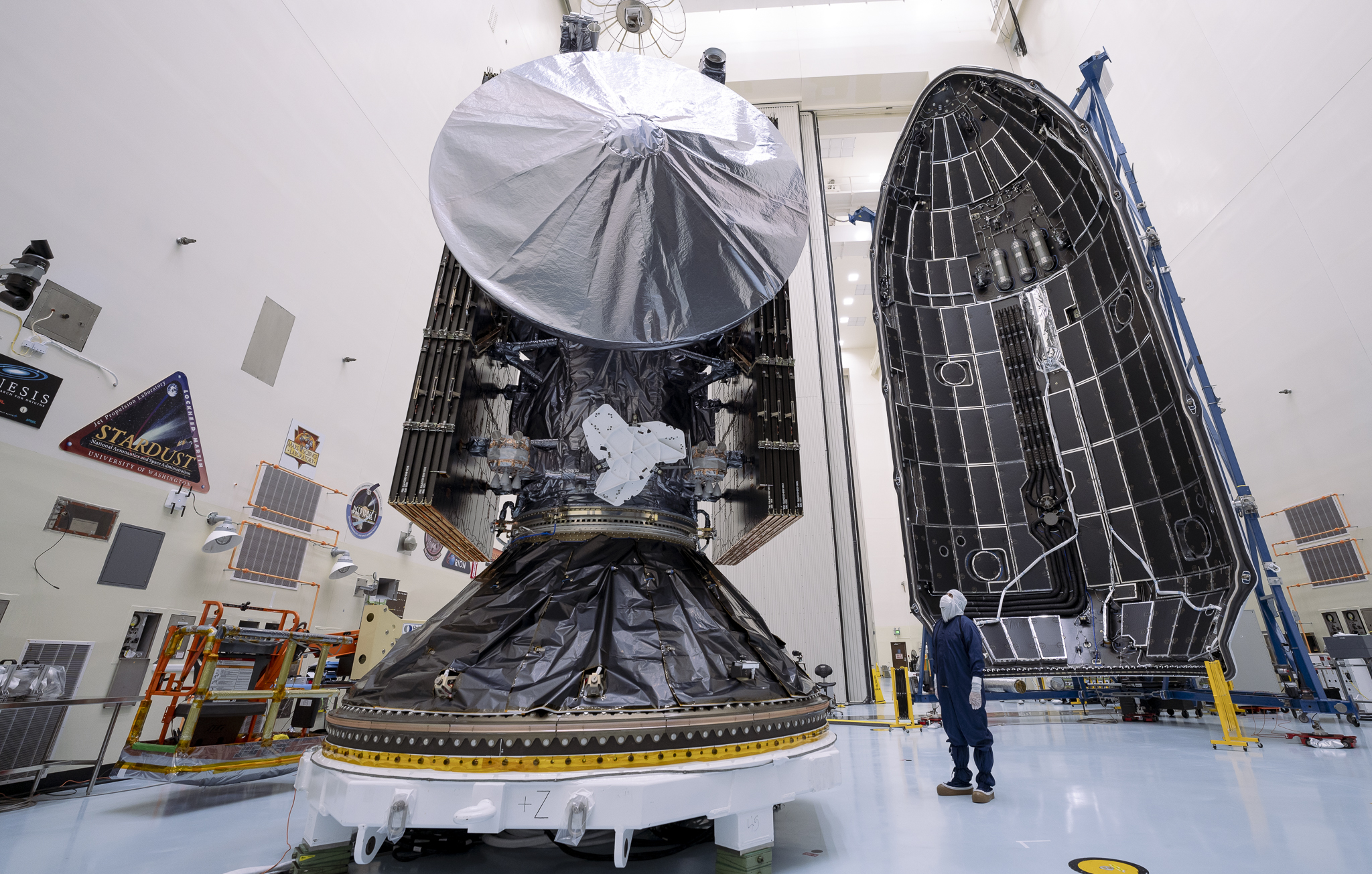
The largest NASA spacecraft ever built for a mission headed to another planet, Europa Clipper also is the agency’s first mission dedicated to studying an ocean world beyond Earth. Using a suite of nine science instruments and a gravity experiment, the mission seeks to determine whether Jupiter’s moon, Europa, has conditions that could support life. There’s strong evidence that under Europa’s ice lies an enormous, salty ocean. Scientists also have found evidence that Europa may host organic compounds and energy sources under its surface. Managed by NASA’s Jet Propulsion Laboratory, the spacecraft launched on Oct. 14, and will begin orbiting Jupiter in 2030, flying by the icy moon 49 times to learn more about it.
Europa Clipper’s main science objectives are to determine the thickness of the moon’s icy shell and its interactions with the ocean below, to investigate its composition, and to characterize its geology. The detailed exploration will help scientists better understand the astrobiological potential for habitable worlds beyond our planet.
NASA’s Ames Research Center in California’s Silicon Valley manages the Advanced Composite Solar Sail System, and NASA’s Langley Research Center in Hampton, Virginia, designed and built the deployable composite booms and solar sail system. Within NASA’s Space Technology Mission Directorate (STMD), the Small Spacecraft Technology program funds and manages the mission and the Game Changing Development program developed the deployable composite boom technology.
The Deep Space Optical Communications experiment is funded by STMD’s Technology Demonstration Missions Program managed at NASA’s Marshall Space Flight Center in Huntsville, Alabama, and the agency’s Space Communications and Navigation program within the Space Operations Mission Directorate. Some of the technology was developed through NASA’s Small Business Innovation Research program.
Managed by Caltech in Pasadena, California, NASA’s Jet Propulsion Laboratory leads the development of the Europa Clipper mission in partnership with Johns Hopkins Applied Physics Laboratory in Laurel, Maryland for NASA’s Science Mission Directorate. The Applied Physics Laboratory designed the main spacecraft body in collaboration with the Jet Propulsion Laboratory as well as NASA’s Goddard Space Flight Center in Greenbelt, Maryland, NASA Marshall, and NASA Langley.
For more information about the agency’s missions, visit:
https://www.nasa.gov
Related Terms
- Ames Research Center
- Deep Space Optical Communications (DSOC)
- Europa Clipper
- Game Changing Development Program
- Goddard Space Flight Center
- Jet Propulsion Laboratory
- Langley Research Center
- Marshall Space Flight Center
- Science & Research
- Small Business Innovation Research / Small Business
- Small Spacecraft Technology Program
- Space Communications & Navigation Program
- Space Operations Mission Directorate
- Space Technology Mission Directorate
- Technology Demonstration
- Technology Demonstration Missions Program
What is Technological Knowledge?
Cite this chapter.

- Sven Ove Hansson
Part of the book series: International Technology Education Studies ((ITES,volume 10))
663 Accesses
As usual, Joanne goes to work by bicycle. She is an engineer in a medium-sized company in the automatic control industry. The first thing she does after putting down her bag in her office is to make a pot of tea for herself and her closest colleagues. She pours four teaspoons of black tea into the pot, one for each person and one for the pot. After bringing a cup of tea to her own desk she begins the day’s work. Her first task is to study a report from the company’s laboratory. The technicians have tested the first prototype of a new thermostat that she has designed. Unfortunately the device did not respond rapidly enough to changes in temperature.
This is a preview of subscription content, log in via an institution to check access.
Access this chapter
Subscribe and save.
- Get 10 units per month
- Download Article/Chapter or eBook
- 1 Unit = 1 Article or 1 Chapter
- Cancel anytime
- Available as PDF
- Read on any device
- Instant download
- Own it forever
Tax calculation will be finalised at checkout
Purchases are for personal use only
Institutional subscriptions
Unable to display preview. Download preview PDF.
Similar content being viewed by others

Some Inventions by Engineers of the Hellenistic Age

The Beginning of the Automation

Iwane Laboratories, Ltd.
Asimov, M. (1974). A philosophy of engineering design. In F. Rapp (Ed.), Contributions to a philosophy of technology (pp. 150–157). Dordrecht: Reidel.
Google Scholar
Böhme, G., Daele, W. van der & Krohn, W. (1978). The ‘scientification’ of technology. In K. Wolfgang, E. T. Layton Jr., & P. Weingart (Eds.), The dynamics of science and technology: Social values, technical norms and scientific criteria in the development of knowledge , (pp. 219–250, Vol II). Dordrecht: Reidel.
Braverman, H. (1974). Labor and monopoly capital: The degradation of work in the twentieth century . New York: Monthly Review
Campbell, R. A. (1989). Work, workers and working-class hyistory. Le Travail, 23 , 221–234.
Article Google Scholar
Doorn, N., & Hansson, S. O. (2011). Should safety factors replace probabilistic design? Philosophy and Technology , 24,151–168.
Drake, S. (1978). Galileo at work: His scientific biography . Chicago: University of Chicago Press.
Faulkner, W. (1994). Conceptualizing knowledge used in innovation: A second look at the science-technology distinction and industrial innovation. Science, Technology and Human Values, 19 , 425–458.
Hansson, S. O. (2002). Understanding technological function. Introduction to the special issue on the Dual Nature programme. Techne , 6 (2), 87–88.
Hansson, S. O. (2006). Defining technical function. Studies in History and Philosophy of Science, 37 , 19–22.
Hansson, S. O. (2007). What is Technological Science? Studies in History and Philosophy of Science, 38 , 523–527.
Hendricks, V. F., Jakobsen, A., & Pedersen S. A. (2000). Technical matrices in science and engineering. Journal for General Philosophy of Science, 31 , 277–305.
Houkes, W. (2009). The nature of technological knowledge. In A. Meijers (Ed.), Handbook of the philosophy of science (pp. 310–350, Vol. 9). Philosophy of Technology and Engineering Sciences, Elsevier.
Janich, P. (1978). Physics – natural science or technology? In W. Krohn, E. T. Layton & P. Weingart (Eds.), The dynamics of science and technology, sociology of the sciences (pp. 3–27, Vol. II). Berlin: Springer.
Jones, D. E. H. (1970). The stability of the bicycle. Physics Today , 23 (4), 34–40.
Kaiser, W. (1995). Die Entwicklung der Elektrotechnik in ihrer Wechselwirkung mit der Physik. In L./ Schäfer & E. Ströker (Eds.), Naturauffassungen in Philosophie, Wissenschaft, Technik, Band III: Aufklärung und späte Neuzeit (pp. 71–120). Freiburg and Munich: Verlag Karl Alber.
Knoedler, J. T. (1993). Market structure, industrial research, and consumers of innovation: Forging backward linkages to research in the turn-of-the-century US steel industry. Business History Review, 67 , 98–139.
Kroes, P. (1989). Philosophy of science and the technological dimension of science. In K. Gavroglu, V. Goudaroulis & P. Nicolapoulos (Eds.), Inre lakatos and theories of scientific change (pp. 375–382). Dordrecht: Kluwer.
Chapter Google Scholar
Kroes, P. (2006). Coherence of structural and functional descriptions of technical artefacts. Studies in History and Philosophy of Science, 37 , 137–151.
Kroes, P., & Anthonie M. (2002). The dual nature of technical artifacts – presentation of a new research programme. Techne , 6 (2), 89–92.
Layman, R. (1989). Applying idealizing scientific theories to engineering. Synthese, 81 , 353–371.
Layton, E. T. (1978). Millwrights and engineers, science, social roles, and the evolution of the turbine in America. In W. Krohn, E. T. Layton & P. Weingart (Eds.), The dynamics of science and technology. Sociology of the sciences (pp. 61–87, Vol. II). Dordrecht: Reidel.
Layton, E. T. (1988). Science as a form of action: The role of the engineering sciences. Technology & Culture, 29 , 82–97.
Lelas, S. (1993). Science as technology. British Journal for the Philosophy of Science, 44 , 423–442.
McMullin, E. (1985). Galilean idealization. Studies in History and Philosophy of Science, 16 , 247–273.
Marx, K. (1867). Das Kapital . Hamburg: Otto Meisner Verlag.
Nonaka, I., & Georg von Krogh (2009). Tacit knowledge and knowledge conversion: Controversy and advancement in organizational knowledge creation theory. Organization Science, 20 , 635–652.
Nonaka, I., & Hirotaka T. (1995). The knowledge-creating company: How Japanese companies create the dynamics of innovation . New York: Oxford University Press.
Norström, P. (2010, in press). Technical know-how from rules of thumb. Techne.
Polanyi, M. (1966). The tacit dimension . London: Routledge.
Richards, P. (1989). Farmers also experiment: A neglected intellectual resource in African science, Discovery and Innovation , 1 , 19–25.
Schummer, J. (1997). Challenging standard distinctions between science and technology: The case of preparative chemistry. Hyle, 3 , 81–94.
Smith, A. (1776). Wealth of nations . London: Strahan & Cadell.
Taylor, F. W. ([1911] 2008). Shop management . Sioux Falls: NuVision Publications.
Vermaas, P. E., & Houkes, W. (2006). Technical functions: A drawbridge between the intentional and structural natures of technical artefacts. Studies in History and Philosophy of Science, 37 , 5–18.
Vincenti, W. G. (1990). What engineers know and how they know it . Baltimore: Johns Hopkins University Press.
Vincenti, W. G. (1992). Engineering knowledge, type of design and level of hierarchy: Further thoughts about What engineers know…. In P. Kroes & M. Bakker (Eds.), Technological development and science the industrial age (pp. 17–34). Dordrecht: Kluwer.
Wood, S. (ed.). (1982). The degradation of work? London: Hutchinson.
Wood, S. (1987). The deskilling debate, New technology and work organization. Acta Sociologica, 30 , 3–24.
Wootton, D. (2006). Bad medicine. Doctors doing harm since Hippocrates . Oxford University Press.
Zilsel, E. (1942). The sociological roots of science. American Journal of Sociology, 47 , 544–562.
Download references
You can also search for this author in PubMed Google Scholar
Editor information
Editors and affiliations.
KTH Royal Institute of Technology, Sweden
Inga-Britt Skogh
Delft University of Technology, The Netherlands
Marc J. De Vries
Rights and permissions
Reprints and permissions
Copyright information
© 2013 Sense Publishers
About this chapter
Hansson, S.O. (2013). What is Technological Knowledge?. In: Skogh, IB., Vries, M.J.D. (eds) Technology Teachers as Researchers. International Technology Education Studies, vol 10. SensePublishers, Rotterdam. https://doi.org/10.1007/978-94-6209-443-7_2
Download citation
DOI : https://doi.org/10.1007/978-94-6209-443-7_2
Publisher Name : SensePublishers, Rotterdam
Online ISBN : 978-94-6209-443-7
eBook Packages : Humanities, Social Sciences and Law Education (R0)
Share this chapter
Anyone you share the following link with will be able to read this content:
Sorry, a shareable link is not currently available for this article.
Provided by the Springer Nature SharedIt content-sharing initiative
- Publish with us
Policies and ethics
- Find a journal
- Track your research

An official website of the United States government
Here’s how you know
Official websites use .gov A .gov website belongs to an official government organization in the United States.
Secure .gov websites use HTTPS A lock ( Lock A locked padlock ) or https:// means you’ve safely connected to the .gov website. Share sensitive information only on official, secure websites.
- Science and Technology Directorate
How We’re Grateful for Our Critical Infrastructure
Traditionally, November kicks off a season of gratitude as we look forward to gathering with loved ones at Thanksgiving. It is also Critical Infrastructure (CI) Security and Resilience Month, a commemoration of the systems and structures in place to ensure our nation and communities remain safe and thriving. Here are some of the ways the Science and Technology Directorate (S&T) has committed to improving resiliency against various threats.
We are executing some of the largest infrastructure investments in U.S. history.
As the emergence of new technologies and more complex local and global threats face our nation’s CI, S&T is investing in research and development to modernize these vital lifelines and ensure they remain functioning and resilient.
S&T's Critical Infrastructure Security and Resilience Research (CISRR) Program was born out of the landmark 2021 Infrastructure Investment and Jobs Act (IIJA), which tasked the Directorate with conducting research, development, testing, and evaluation in five targeted strategic mission areas. The need for increased CI protection is further emphasized in the recent National Security Memorandum on Critical Infrastructure Security and Resilience issued by the White House in April and strategic guidance issued by Secretary of Homeland Security Mayorkas in June.
From this month, CISRR is more than halfway completed, and we continue to advance on the massive infrastructure investment by tapping into the latest science and technology innovations addressing key CI needs. Stay tuned to S&T’s LinkedIn throughout November for a new series of vignettes demonstrating how CISRR is leveraging IIJA funding into impactful results.
We are revolutionizing energy solutions in remote Arctic communities.
Increasing sea ice, coastal erosion, environmental hazards, and other challenges could cause power outages in remote facilities in the formidable Arctic region. To power those facilities during maritime traffic spikes or natural disasters, S&T is working with the brand new Arctic Domain Awareness Center-Addressing Rapid Changes through Technology, Innovation, and Collaboration Center of Excellence, led by the University of Alaska at Anchorage, on the Reliable Arctic Power & Intelligent Energy Resilience (RAPIER) project.
The RAPIER team will collaborate with rural communities to identify energy needs and renewable energy options (solar, wind, wave, tidal, run-of-river, and nuclear) and propose a deployable pilot solution and an optimal energy portfolio for Department needs, including electric vehicles and boats. RAPIER will ultimately help DHS effectively react to life-altering contingencies quickly and better prepare local electric grids.
We are securing against Positioning, Navigation, and Timing threats.
Critical operations like the electric grid, communication networks, and financial institutions rely on Positioning, Navigation, and Timing (PNT) services via the Global Positioning System (GPS). However, GPS is susceptible to disruption, like interference, jamming, and spoofing, that could cause safety-of-life issues or CI failure. To better understand those threats, the CISRR Program is collaborating with industry, manufacturers, and other partners to develop actionable best practices, standards, frameworks, and tools. These products will maximize robust, strengthened, and resilient PNT solutions designed for CI owners and operators, technology manufacturers, and service providers.
We are defining telecom supply-chain risks for self-driving and wi-fi/5G communicating vehicles and smart transportation systems.
As CI increasingly relies on real-time communications for monitoring, operations, and control, telecommunications infrastructure becomes essential for functionality. For five years, the Critical Infrastructure Resilience Institute (CIRI) Center of Excellence has collaborated with the Cybersecurity and Infrastructure Security Agency (CISA) to provide a comprehensive analysis of the risks of the 5G telecommunications supply chain, focusing on connected and automated vehicles and smart transportation systems. Outcomes will include a risk assessment tool and a comprehensive risk assessment model for 5G telecommunications disruption on road-side units and its impact on self-driving vehicles.
We are building the resilience and security of drinking water systems.
Recent cyber-attacks on our public water systems demonstrate the urgent need for enhanced cybersecurity. To address this, CIRI created the Cyber Secure Dashboard (CSD) to help businesses and enterprises, such as water systems, enhance their cybersecurity posture. CSD uses the National Institute of Standards and Technology’s (NIST) Cyber Security Framework (CSF), an easier and cheaper way for organizations to meet cybersecurity standards. CIRI is also developing a NIST CSF Profile for Public Water Systems, with support from the U.S. Environmental Protection Agency, to be integrated into the CSD tool.
We are collaborating with industry to boost emergency interoperability.

Public safety professionals, emergency managers, state and local government leaders, and other key stakeholders must be able to exchange actionable and timely information to meet their missions head-on.
Last month, S&T hosted an Industry Day to highlight another CISRR-funded effort—the Information Sharing Framework (ISF)—which is addressing interoperability gaps and establishing a mechanism for prioritized information sharing between first responders and emergency communications technologies during incident response. The outcome will be a framework for practitioners to design their systems to securely share data across systems.
We are strengthening physical security at major events.
As domestic terrorism concerns for our nation and infrastructure grow, there is a greater need to enhance crowded places security to keep civilians safe, particularly during special events. In February, S&T’s Physical Security Program deployed the Ready Armor Protection for Instant Deployment (RAPID) barrier at the 2024 NFL Honors Event, which protected the venue and attendees from potential harm from vehicle ramming or homemade explosives. Then, at the 108th running of the Indianapolis 500 race in May, S&T tested, demonstrated, and enhanced the Deployable Expedient Traffic Entry Regulator (DETER) vehicle barrier, which protects critical assets and civilians from vehicle ramming attacks. S&T successfully gathered valuable data about RAPID’s and DETER’s durability and operation to further improve the security and resilience of future special events.
Visit our Research and Development pages for even more examples of S&T’s ongoing CI work and follow us on social media @DHSSciTech.
- Science and Technology
- Critical Infrastructure
- Infrastructure

IMAGES
VIDEO
COMMENTS
Measuring and Managing Technological Knowledge. Roger E. Bohn October 15, 1994 Reading Time: 35 min. Permissions and PDF Download Share. "Knowledge is power.". — Francis Bacon. As we move from the industrial age into the information age, knowledge is becoming an ever more central force behind the competitive success of firms and even nations.
A technology domain, as the researchers define it, consists of sets of artifacts fulfilling a specific function using a specific branch of scientific knowledge. To find the patents that best represent a domain, the team built on previous research conducted by co-author Chris Magee, a professor of the practice of engineering systems within the ...
The technological knowledge can be based on planned scientific research and development or serendipitous discovery. Solves a specific problem or challenge or creates a new capability. Technology does not exist merely for its own sake but it is or should be purpose-driven, usually but not always, to improve the condition of those who invent ...
The nature of technological knowledge. In A. Meijers (Ed.), Handbook of the philosophy of science (pp. 310-350, Vol. 9). Philosophy of Technology and Engineering Sciences, Elsevier. ... Market structure, industrial research, and consumers of innovation: Forging backward linkages to research in the turn-of-the-century US steel industry ...
A complicating factor is that 'technological knowledge', is, to some extent, a technical term. Whereas 'scientific knowledge', sees a considerable amount of everyday usage, one seldom comes across descriptions of a model or research result as 'technological knowledge'.
Abstract. Philosophy of technology has increasingly emphasized the particular nature of technological knowledge, mainly the fact that it is different from scientific knowledge. This paper brings together several characteristics of technological knowledge which are scattered throughout the literature. Its aim is to contribute to a better ...
Knowledge is the most essential competitive resource for corporate innovation (Fallatah, 2018).Knowledge-based theory of the firm (Grant, 1996) provides a useful account of innovation; namely, innovation is the renewal and reform of knowledge.Therefore, to keep up with future technological advancements, corporations need to continually acquire new and diversified knowledge (Gonzalez and de ...
Abstract. Background: Substantial research highlights the differences between scientific and technological knowledge.Considering that learning is heavily focused on the acquisition of knowledge, it is important to examine the individual and systematic implications of these types of knowledge.
The chapter was intended to provide a n original and creative review of th e literature on. the dynamics of technological knowledge. Table 1 provides a s ynthesis and a tax onomy. of the different ...
On this basis we define technology and technology research like this: Technology is "the knowledge of artefacts emphasizing their manufacturing". Technology research is "research for the ...
The grounding of te chnological knowledge. In the philosophy of technology, studies of the relation between science and tech-. nology have been dominated by the applied-science debate. One ...
Publications Journals. The top 10 most-publication journals are shown in Figure 4.The top five are Computers and Education (32), Education and Information Technologies (28), Journal of Digital Learning in Teacher Education (28), Journal of Research on Technology in Education (27), and Australasian Journal of Educational Technology (24). Other journals also published at least 13 TPACK related ...
Information technology has emerged to spread shared knowledge and is a primary driving force behind education reforms. The introduction of new technology-assisted learning tools such as mobile devices, smartboards, MOOCs, tablets, laptops, simulations, dynamic visualisations, and virtual laboratories have altered education in schools and ...
Technology as Knowledge: Implications for. organized knowledge (Mesthene, The role of technologyThere is a strong belief among tutes a type of formal knowledge that is suggested that since technology has study is similar to how one would the school. such as algebra or physics Savage and Sterry, 1990). Lewis and technology educators "have two ...
Cluster B covers the research dealing with technology as a driver of DT, including the current state of digital technologies and how to manage their associated increases in data. ... Research propositions for knowledge management systems supporting electronic business. International Journal of Innovation and Learning, 3(6), 593-606. Crossref ...
Contrary to perceptions in which technological development proceeds independently of scientific research, the interplay between science and technology has been recognized as an essential part in technological change, industrial competitiveness, and economic growth. While the process of knowledge exchanges between the nexus is conceptually well grounded in relevant literatures, the absence of ...
He is a visiting professor at Aston University (UK) and a former editor-in-chief of Research-Technology Management. He previously held senior management positions in innovation leadership at Goodyear Tire and Rubber Company, Pitney Bowes, and Bell Atlantic. He holds BS and MS degrees in mechanical and aerospace engineering from Cornell and ...
Oct 30, 2024. Article. As NASA continues to innovate for the benefit of humanity, agency inventions that use new structures to harness sunlight for space travel, enable communications with spacecraft at record-breaking distances, and determine the habitability of a moon of Jupiter, were named Wednesday among TIME's Inventions of 2024.
Science, technology and innovation each represent a successively larger category of activities which are highly interdependent but distinct. Science contributes to technology in at least six ways: (1) new knowledge which serves as a direct source of ideas for new technological possibilities; (2) source of tools and techniques for more efficient engineering design and a knowledge base for ...
Vincenti (1990) divides technological knowledge into different categories based on the parts of an engineering design process in which it is used. Hansson (2013) categorises it according to how it ...
Today, technological knowledge is at the centre of the discipline of knowledge management that was established at the beginning of the 1990s. The Japanese ... concept to practically oriented management and organization research. His main focus is on how tacit knowledge can be transferred from one person to another. There
Release Date: November 4, 2024. Traditionally, November kicks off a season of gratitude as we look forward to gathering with loved ones at Thanksgiving. It is also Critical Infrastructure (CI) Security and Resilience Month, a commemoration of the systems and structures in place to ensure our nation and communities remain safe and thriving.
innovation is one of the keys to the research area in innovation studies. (1) The data came from the Web of Science Core Collection database. (2) A bibliometric overview of research in ...
Becoming a licensed pharmacist in Oklahoma involves several key steps, including education, examination, and maintaining an active license. After completing a Doctor of Pharmacy (Pharm.D.) program, aspiring pharmacists must pass the North American Pharmacist Licensure Examination (NAPLEX) and the Oklahoma Pharmacy Law Exam.